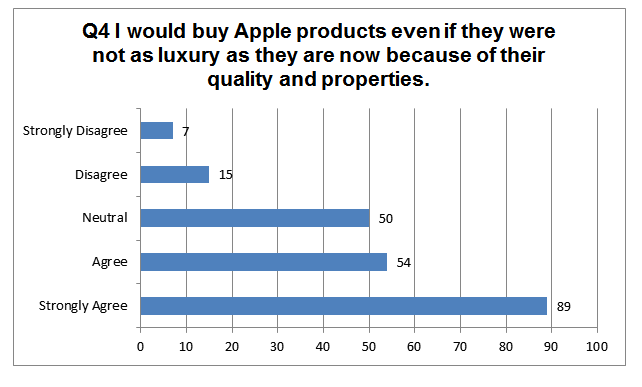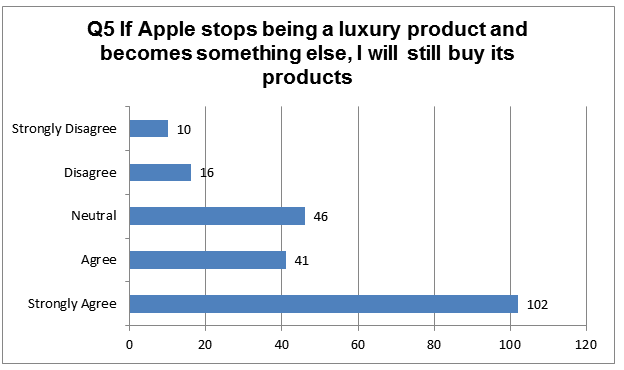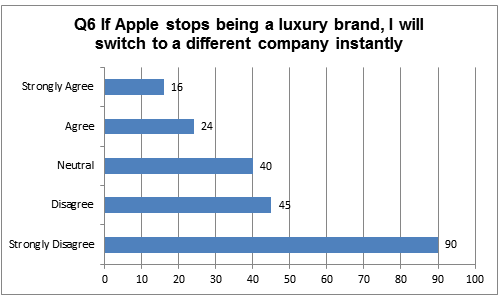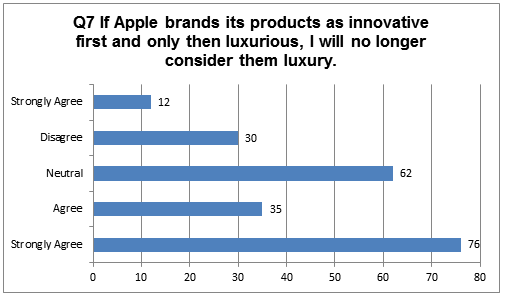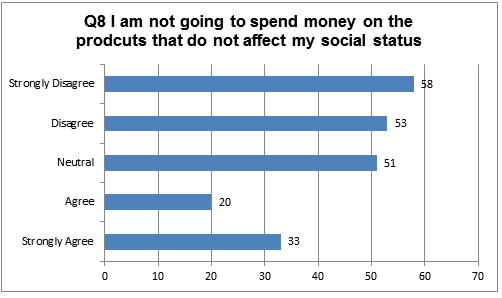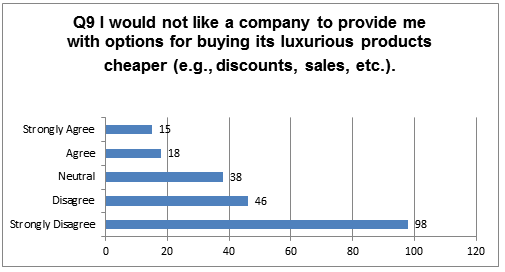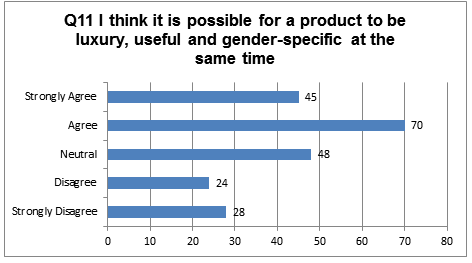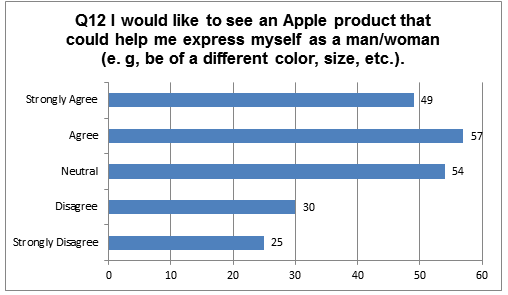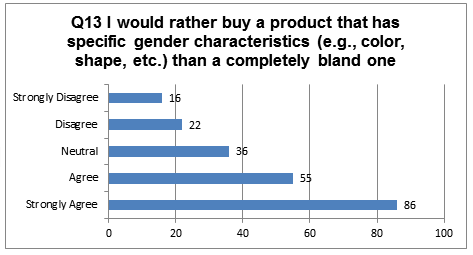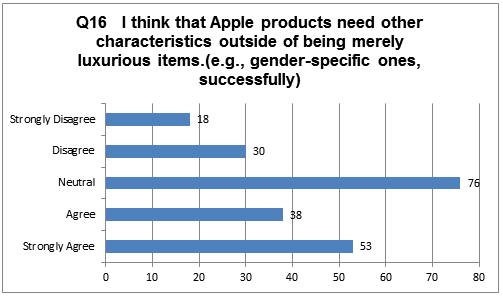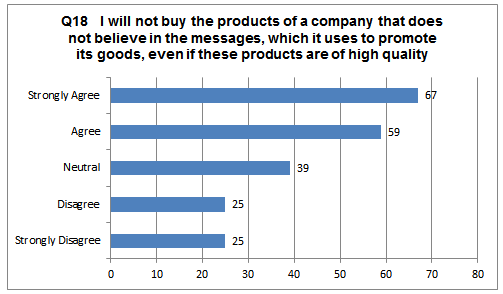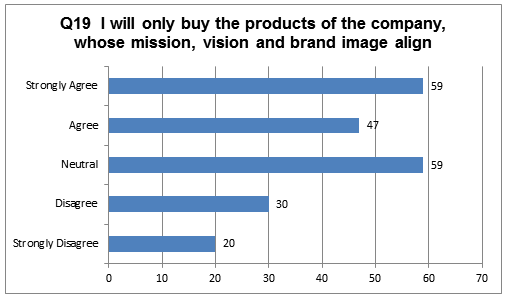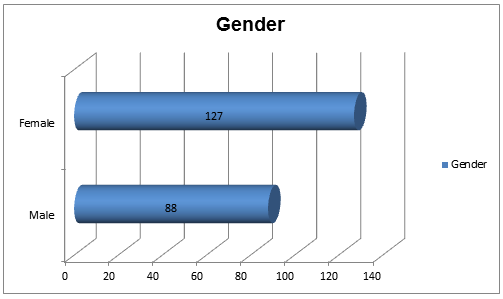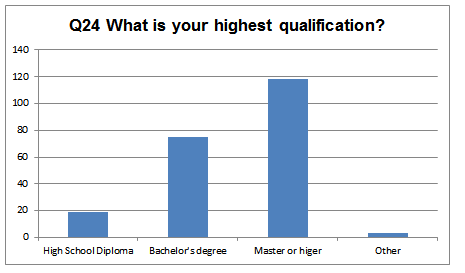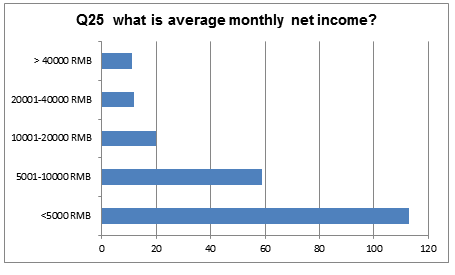Abstract
Background
Apple has been known as a successful organization, which has been performing well in the global economy environment and that has been represented in a variety of markets. Apple has only recently targeted the Asian market. Although the recent branding strategy used in China has been successful, the company is currently facing a myriad of challenges. Apple needs to come up with a new branding approach that will align with its corporate values and meet the needs of the target audience to survive the swings in the Chinese market.
Objectives
The study aims at determining the possible avenues for Apple to retain its popularity in the Chinese market with the help of a new branding strategy. Moreover, the study will locate the branding approaches, which Apple will need to adopt, as well as consider the current luxury-based branding as a possible addition to a new branding technique.
Methods
The study includes a linear regression analysis of participants’ responses to a set of questions regarding their consumer behaviour and buyers’ choices. A questionnaire including 21 Likert-scale questions was designed and distributed among a group of participants.
Results
Apple will have to retain the emphasis on luxury as the key to branding to the Chinese population. However, additionally, the organization will have to introduce new elements into its branding approach. By focusing on the luxury and technological breakthrough that the new product represents, the company is most likely to retain its target audience.
Acknowledgements
I would like to express my deepest gratitude to my supervisor Mark Foster, who guided me through the processes of writing the paper, inspired me for excelling in my research and helped me develop my logical thinking skills.
Introduction
Apple, Inc.: Entering the Chinese Market
Although Apple, Inc. went global almost ten years ago (Chan, Pun & Selden 2013), the organization has been overlooking the Asian market for quite long (Froud, Johal, Leaver & Williams 2011). The company has recently decided to make up leeway and enter the Chinese market, promoting its latest products to the local demographics (Chapman, Hoskinsson & Christian, 2012). Although the company had to target an entirely different audience with a unique culture and specific demands, the organization still managed to carry out the promotion campaign with success, taking the Chinese population by a storm (Froud et al. 2011).
Specifics of the Target Market: Driven by Emotions
In order to understand the approach, which Apple adopted to integrate into the Chinese market, one should consider its key specifics. A closer look at the aforementioned area will reveal that the buying behaviour of the Chinese customers is rather sporadic and emotional (Chen, Huagn & Stenquist 2011). As a result, these people are often driven not by the quality of the product and its shelf life, but by the on the opinions of their friends and neighbours (Armstrong & Yee 2012; Lin 2009). Typically identified as a complex buying behaviour (Radam, Ali & Leng 2011), the specified characteristics of the Chinese population defined Apple’s branding approach completely, making the company put a strong emphasis on the price of its product.
Research Problem: Defining the Chances for Success
Apple, Inc. has been known as one of the leaders in the global IT market; moreover, the organization has been glorified for its branding strategy, which allowed it to sell every single idea (Statista. 2015). Indeed, according to the statistical data gathered over the course of the past decade, Apple has not seen any major failures yet, as Fig. 1 below shows. Additionally, the organization has been deploying the approach based on a detailed research of the target market (Weinstein, Jin & Barrett 2013), which allowed it to remain in the top five of the world’s greatest branding giants for more than two decades.
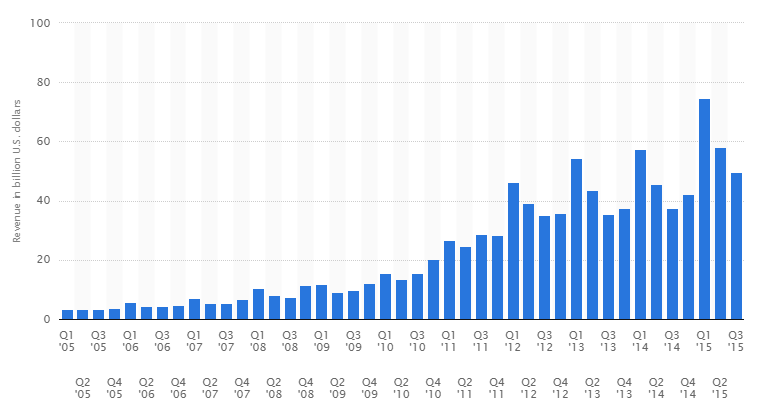
Despite the above success, targeting the Chinese market is not an easy task. As a result of the specifics of Chinese buyers, who enjoyed luxury products, Apple had to apply a strategy that was different from its traditional branding tools. Traditionally, Apple stresses its technological advance and avoids mentioning the price (Mickalowski, Mickelson, & Keltgen 2008). For other states, the specified strategy works well, as Apple offers very expensive products compared to other companies (Kong & Yazdanifard 2013, p. 4). In Europe and the United States, overpaying for the mere sake of the brand is not viewed as reasonable (Piltan & Sowlati 2014). The mentality of the Chinese customers, however, does not allow for this approach (Luo 2009). Apple, Inc. marketers needed to adopt an entirely different strategy. Despite the fact that the Chinese market was entirely new for Apple at the time, the organization still managed to reach its top (Mickalowski et al. 2008). This event can hardly be viewed as a coincidence, which means that Apple’s strategy in China needs to be studied closer.
Research Objective: Understanding the Apple’s Branding Approach
The success, which Apple reached in China, can be explained by the fact that the company took the cultural specifics of the state into account and switched from its traditional branding approach to luxury-based branding. There are five main ethnic groups in China. These ethnic groups are the Asians (Chinese, Japanese, Koreans, and the Philippines), the Hispanic (Nicaragua, Chile, Mexican, and Cuban), the Whites (Europeans, Americans, and others), the Indians, and the African Americans. Within the native Chinese ethnic group, Chinese Han subgroup forms the majority with a population of more than 1 billion. There are other 55 minority subgroups within the native Chinese ethnic group. Reflectively, the Asians of the Chinese origin are the majority and their culture is very dominant. For instance, the culture and the theme of Beijing City is that of the Chinese ethnic group (He 2010). This aspect must be integrated to ensure that any branding strategy is consistent with the local culture (He 2010). Despite the globalisation process, which caused certain similarities between other markets and the Chinese market to emerge, the Chinese market still retains its uniqueness of being highly stratified along the cultural dimension (He 2010). Therefore, the objectives are summarized as follows.
- To identify the possible routes of the current Apple’s branding strategy’s development and locate the key elements of the required approach.
- To identify the key factors that are likely to affect the branding strategy that the company will adopt to be successful in the Chinese market.
- To identify the tools, which the company may use in order to win the Chinese customers especially in terms of brand integrity and visibility.
- To predict the effects, which the specifics, of the target market will have on Apple’s branding strategy.
Motivation on Research
This research project was motivated by the need to for the Apple’s current branding strategies in the Chinese market to be modified to improve its visibility and customer base. The rationale for choosing this topic was informed by the need to add new knowledge to the current available literature on Apple’s branding strategies in alien markets. As indicated by Wang (2014), proper product branding is significant towards market penetration and sustaining positive perception through varies aspects of product visibility such as brand symbolism and architecture (Wang 2014). Besides, Zhiyan, Borgerson, & Schroeder (2013) note that a strong brand management is directly related to proper brand promotion, architecture, and segmenting the branding strategies within the relevant market demographics (Zhiyan, Borgerson, & Schroeder 2013, P. 56). The analysis of the changes, which Apple had to make to its current branding approach, may serve as the basis for a better understanding of branding as a concept and its success in the China market.
The topic will be examined through quantitative data analysis from 215 questionnaires filled by potential customers of the Apple products within the Chinese market. Through random sampling, the questionnaire will include twenty questions that are aimed at determining the change in Chinese customers’ attitude towards the products that Apple has been supplying over the past few years (Kapferer 2012). Particularly, the alignment of Apple’s strategy with the specifics of the buyers’ behaviour in China is to be identified with the help of the questionnaire mentioned above.
Research Structure
This study will review in-depth analysis of the quantitative method, which will be employed to address the aim and objectives of the research treatise. Thereafter, a comprehensive literature review will be done to ensure that theoretical and empirical aspects of the research are integrated in the current study. In the third part, a summary and explanation of the appropriate methodology will be presented after which an explicit data analysis will be presented. This part will incorporate all aspects of data interpretation and the sample response analysis. The last section of the paper will involve a comprehensive discussion of the results and recommendations as a conclusion of the research study. This is summarized in figure 2 below.
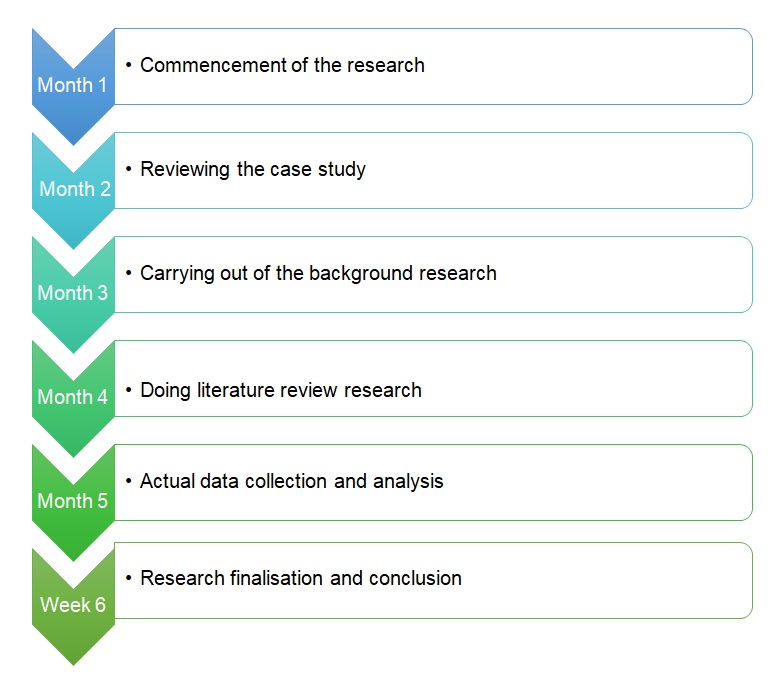
Literature Review
Branding
The phenomenon of branding is not new; it dates back to the early 20th century (Strebinger, 2014). Branding is typically defined as an essential part of a company’s marketing strategy and a means to make the firm’s products memorable (Irimes 2012). Branding is based on the company’s values, mission, and vision and presupposes that people could relate to a product “both intellectually and emotionally” (Wang 2010, p. 21).
Brand
A brand, in its turn, is typically referred to as a specific item that adds unique features to a product of a company, making it look different from similar products offered by other firms (Kapferer 2012).
Brand identity
A brand identity consists of vision, culture, personality, relationships, positioning and presentations (Zhiyan, Borgerson, & Schroeder 2013) and contributes to the creation of a distinctly original product.
Theories of branding
Corporate theory of branding
According to Gibson (2013), the theory of corporate branding, which is a “holistic brand management approach adopted by firms to provide a unique corporate identity” (Samanta, 2014, p. 170), serves as the basis for promoting products in the environment of global economy. The theory in question allows exploring and predicting customers’ responses to brand extensions on a global level and helps understand how customers perceive brands in general (Choi & Cheng 2015).
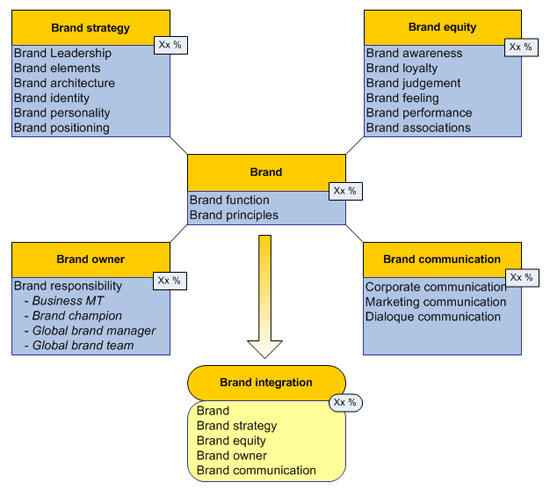
As the picture provided above shows, the corporate theory of branding embraces the process of branding at several stages, including the interpersonal one, the process of branding as a part of the marketing process, and the corporate communication level, which can be defined as the global one. The model in question helps understand the changes, which the Apple, Inc. had to make in its brand communication approach as the firm offered its products to an entirely new market.
Cultural branding theory
The social theory of branding, which includes age and gender stratification theories, presupposes that branding strategies should be developed with the social specifics of the target audience in mind. Therefore, social characteristics such as age, gender, nationality, etc. are viewed as the key determinants of customers’ choices in the specified theory.
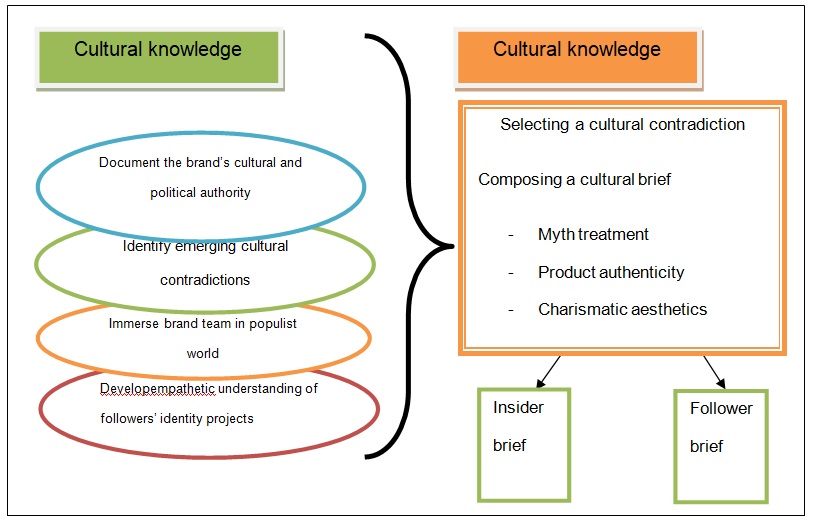
According to the specified theory, in order to create cultural brand identity, which the target denizens of the population will be able to identify themselves with, it is necessary to locate cultural contradictions, which are characteristic of the specified country, and build the brand identity on the principles, which serve as the basis for the local people’s identity development (Liu 2011).
Multidimensional theory of branding
When branding a product to the target audience, one strives for creating an emotional connection between the customer and the company (Berg 2013). Brand symbolism is predetermined by the specified connections (Brown & Ponsonby-McCabe 2014), increases.
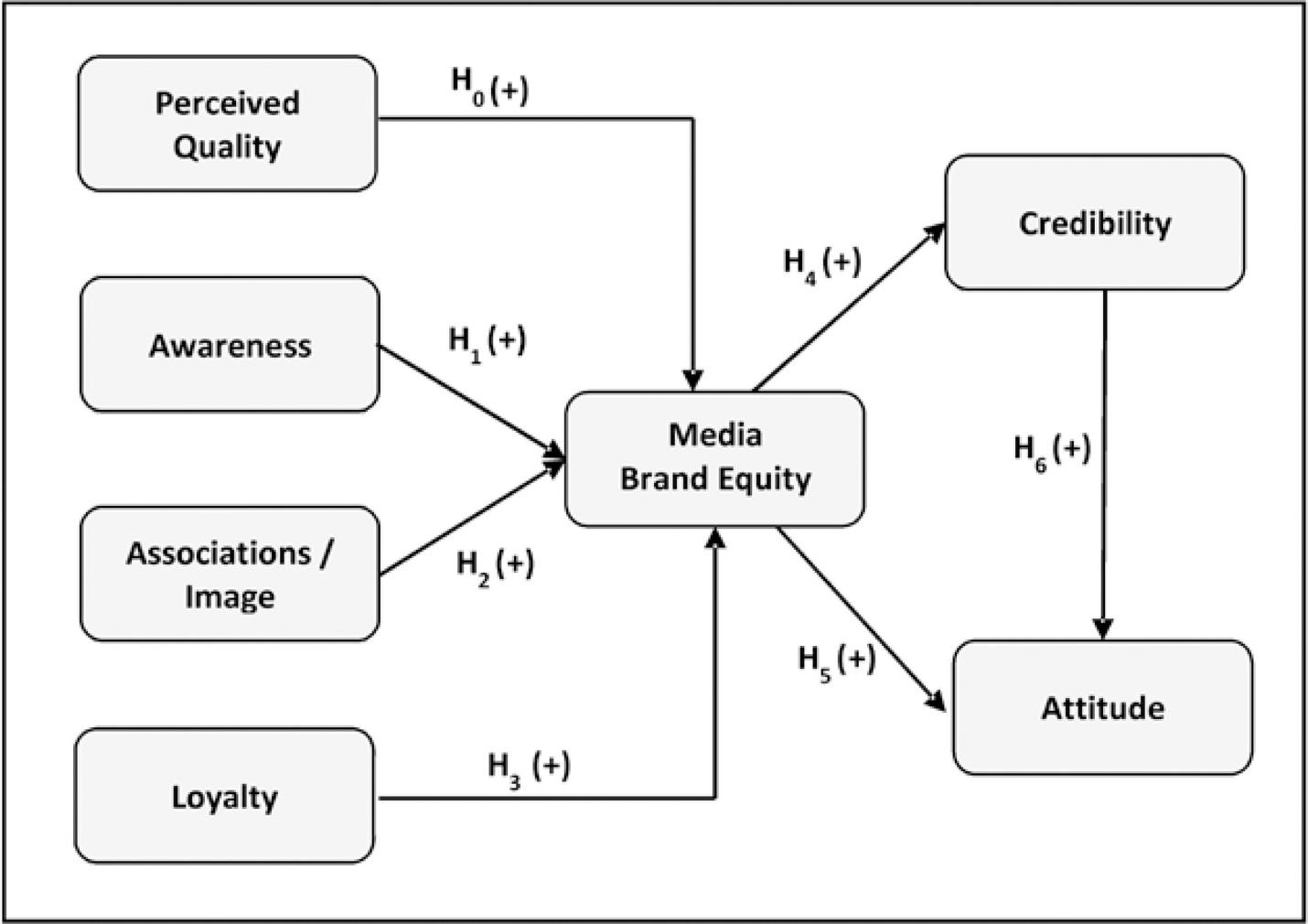
Information integration theory
IIT was designed to identify the patterns of customers’ attitude towards luxury brands and it states that customers’ attitude to a specific brand is only altered slightly, but not changed entirely after new information about the brand is provided (Swan & Zhu 2012).
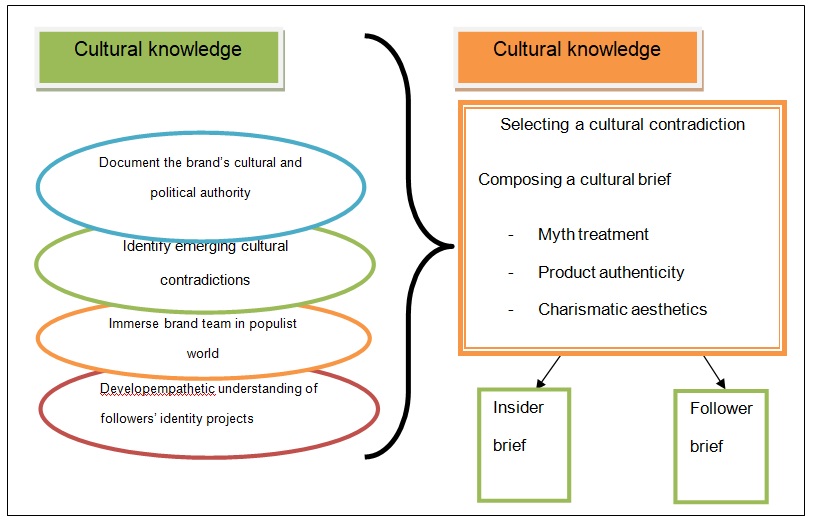
Particularly, the theory states that customers have two dimensions for evaluating brand products, i.e., the value of the products and its weight. The value helps identify whether the purchase of a product should be viewed as a favourable or an unfavourable step, whereas the weight defines the importance of the purchase (Sullivan 2009).
Hierarchy of effects model
The specified theory allows for locating the stages, which a customer must undergo in the process of decision-making to buy a specific product.

As Fig. 6 above shows, the theory in question relates the six key stages to the steps such as thinking, feeling and doing; in other words, the customer must acknowledge the need to buy a product, decide how they feel about the product in question and, finally, purchase it.
Nation branding
Suggested by Wally Olins in early 2000s (Kaneva 2011), the theory in question suggests that branding occurs on a nationwide level and that every country has a unique branding approach, which defines the branding strategies used by the state companies (Dinnie 2010). The subject matter is defined as “a process by which a nation’s images can be created or altered, monitored, evaluated and proactively managed in order to enhance the country’s reputation among a target international audience” (Fan 2010, p. 101). Although the theory in question has a substantial line of reasoning to rely on (Nilanjian 2015), it is still understudied (Kaneva 2011).
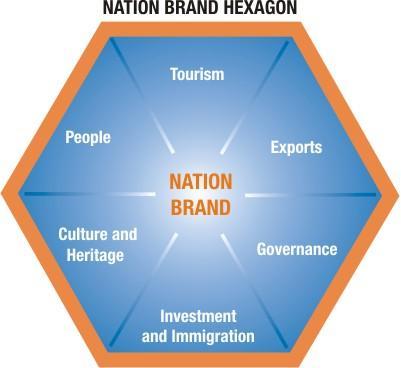
Consumer culture theory
The theory in question explains branding from the perspective of consumer culture. According to the theory under analysis, there are dynamic relations between target customers, brand products and the marketplace (Wang 2014). As a result, the cultural meaning of buyers’ behaviour is explored with the help of the theory in question.
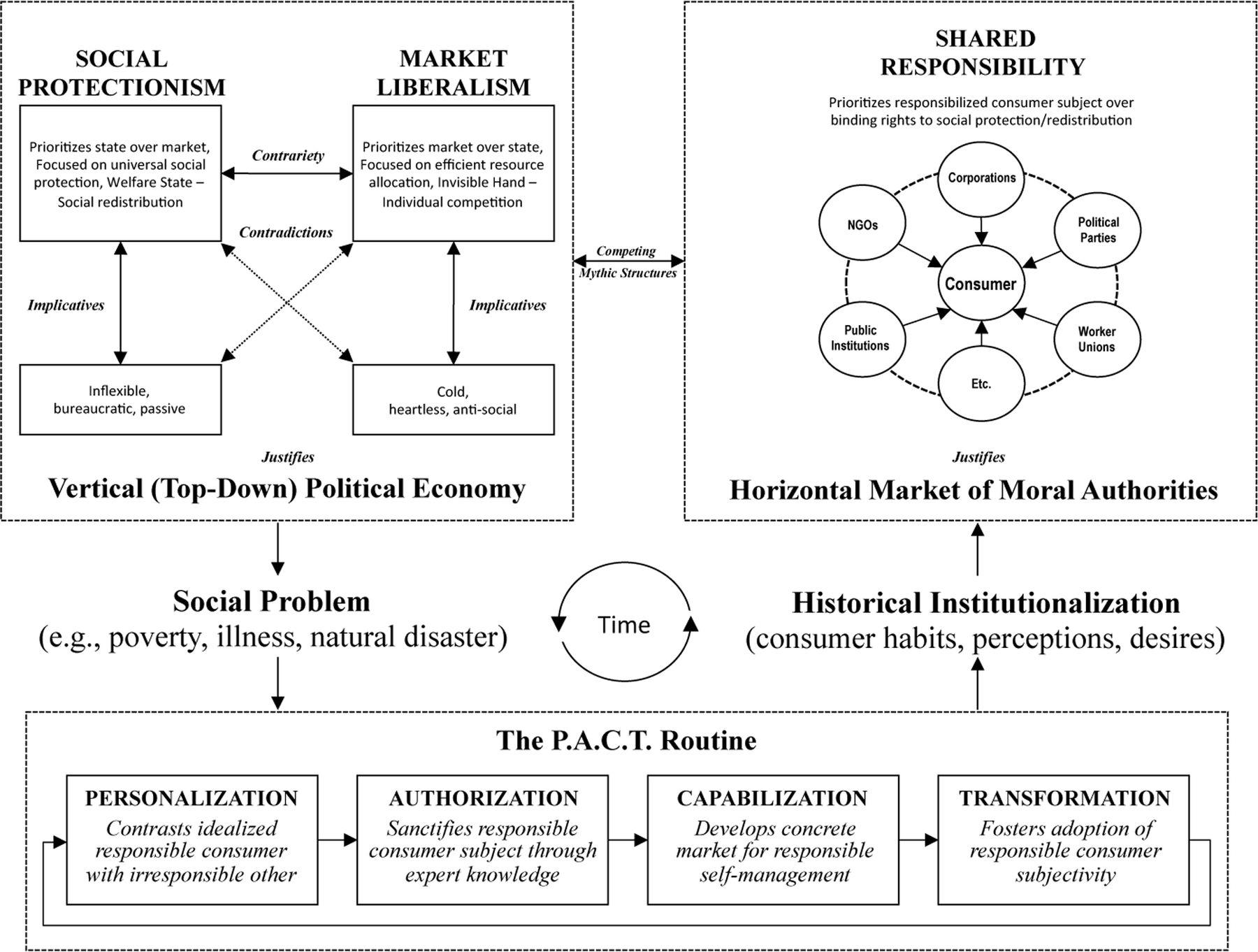
Brand identity prism
Coined by Kapferer, the above-mentioned concept presupposes that the further extension of the brand identity must be built on an already created brand personality (Viot 2011). The model helps locate possible avenues for brand extension and creates premises for enhancing customers’ enthusiasm for the brand.

Applied to the Chinese environment and the Apple case, the brand identify prism theory points clearly to the fact that Apple will have to develop the new branding strategy based on the unique characteristics of Chinese people (Strebinger 2011). Particularly, the patterns of buyers’ behaviour in China must be taken into account (Tu, Li, & Chin 2013). Altering drastically the current approach based on luxury does not seem reasonable.
Brand image
As a rule, the phenomenon of branding is often related to a brand image. The latter is typically identified as a “perception about a brand held in consumer memory” (Tu, Li & Chin 2013, p. 471). The concepts of a perceived image and the desired one are traditionally identified as the major representations of a brand image (Gross 2014). The perceived image is defined as the way, in which customers currently see a product of a specific company (Heath 2012). The perceived image of a brand product is defined by the brand personality, which, in its turn, is shaped by the “company’s image, logo, packaging and celebrity endorser” (Tu et al. 2013, p. 471). In other words, the perceived image is the idea that customers have about an organization and its products (Perrey & Spillecke 2012).
Branding strategies
The desired image coincides with the perceived one in the best case scenario (Strebinger 2014). The subject matter is the image that a company wishes it could establish in the target market (Wheeler 2012). Since markets are characterized by unique features, most companies “decide on a case-by-case basis what brands to assign to which products” (Strebinger 2014, p. 1783). However, there are several essential branding strategies, which are traditionally adopted in the global market (Strebinger 2011). These are identified as brand architecture strategies (Kapferer 2012) and include three key types listed below.
Corporate brand strategy (“C-branding”)
The approach presupposes that a uniform branding strategy should be adopted to promote all products created by the organization (Ganesman 2012).
Product brand strategy (“P-branding”)
The specified approach presupposes that every product is assigned with a specific brand name (Strebinger 2011).
Cross-national branding
The strategy in question presupposes integrating the specifics of the culture of the company and the one of the target audience as the basis for developing a branding strategy (Hubschmidt & Lang 2013, p. 199).
Types of branding
Branding has a rather vast typology. Particularly, personal, cultural, corporate and geographic branding approaches are usually identified (Morschett, Schramm-Klein, & Zentes 2011). In fact, there exists even the so-called no-brand branding (Yeshin 2012), which presupposes that no emphasis should be put on the brand name of the product (Yeshin 2012). Additionally, the types of branding such as primary, secondary and tertiary (Anheier & Isar 2012) are identified.
Apple’s General Branding Strategy
Apple has been using the corporate brand strategy, or C-branding consistently until it started promoting its products to the Chinese customers (Balmer 2012). The company has been designing its branding strategy based on the value and the vision of the company for a while, which concerned primarily the provision of high quality, technologically advanced, though admittedly expensive products to the target customers (Haslehurst, Moran & Baptist 2015; Konstantopoulos 2014). As the chart below shows (Figure 10), Apple remains the leading organization in the smart phone industry in terms of customer loyalty even with competitors as powerful as Nokia and LG (Penson & Brosdahl 2013). It can be assumed that the consistency of Apple’s brand strategy is what attracts most European and American customers to it (Ganesman 2012).

Apple brand personality
As far as Apple’s brand personality is concerned, the company promotes its products as the tools that will help remove unnecessarily complicated routine from people’s lives (Marketingminds 2014). Combining simplicity with advanced technology to provide customers with unique options, the company has created a very strong brand personality (Konstantopoulos 2014).
Apple’s brand personality appeals to customers within the digerati and gauchos segments in China (Penson & Brosdahl 2013). As a result, the organization develops its brand personality around the concepts such as “lifestyle; imagination; liberty regained; innovation; passion; hopes, dreams and aspirations; and power-to-the-people through technology” (Marketingminds 2014, par. 8). As the figure above shows, Apple seems to integrate the Brand Identity Prism theory into the process of creating its brand personality (Weinstein, Jin & Barrett 2013). Indeed, Apple focuses on the picture of the recipient as much as it does on the picture of a sender taking the specifics of the Chinese culture into account (Poon 2014; Gazzola & Colombo 2014).
Apple’s traditional branding strategy
As it has been stressed above, the strategy that the company has been using for quite a while can be defined as C-branding, since Apple has been promoting a uniform brand to all target markets up until recently when it had to integrate into the Chinese one (Haslehurst et al. 2015; Johansson & Karlsson 2014). The previous strategy of the company can be viewed from the perspectives of the social theory of branding and the psychological theory of branding (Clifton 2010). The social theory factors in as the tool that helps Apple target both young and mature audiences (Rendtorff 2014). By adopting the stratification principles into its branding approach, the company manages to address the needs of both young and adult customers (Masi 2009). For instance, the emphasis on the advanced technological solutions, which the organization has to offer to its target audience, attracts young customers all over the world: “More mobile users are attracted to this product due to its highly innovative features that are acknowledged by customers” (Ismail 2012, p. 227).
The reliability of the brand, as well as the flexible financial strategy, which makes Apple ready to provide its clients with discounts and make other financial compromises, in its turn, makes the company’s products attractive to the older generation: “Besides price, technology companies can define their core value by targeting different levels of customers” (Johnson et al. 2012, p. 5). The company clearly aims at proving that information technology can be a part of every person’s life and not only the “geek culture” (McArthur 2008, p. 62). The company has been promoting these concepts as the selling point in the American and European markets successfully so far (Thunman 2012). Apple obviously takes its brand very seriously, as the “corporate brands are a senior/CE) management responsibility” (Balmer 2012, p. 13). The company’s branding strategy concerns creating the gadgets that will help make the lives of people easier (Haslehurst et al. 2015). The specified goal aligns with Apple’s vision and mission perfectly (Apple 2015b, par. 4).
Apple has never followed the norm in terms of the branding strategy choice. Instead, the company prefers to apply the method that it has designed specifically for the needs of the organization (Poon 2014).The approach in question can be viewed as rather dangerous as it invites a variety of risks (Chan et al. 2013; Luo 2009). However, one must give the company credit for using every single opportunity to minimize this risk and achieve stellar success in each case of branding a product in a new market (Haslehurst et al. 2015).
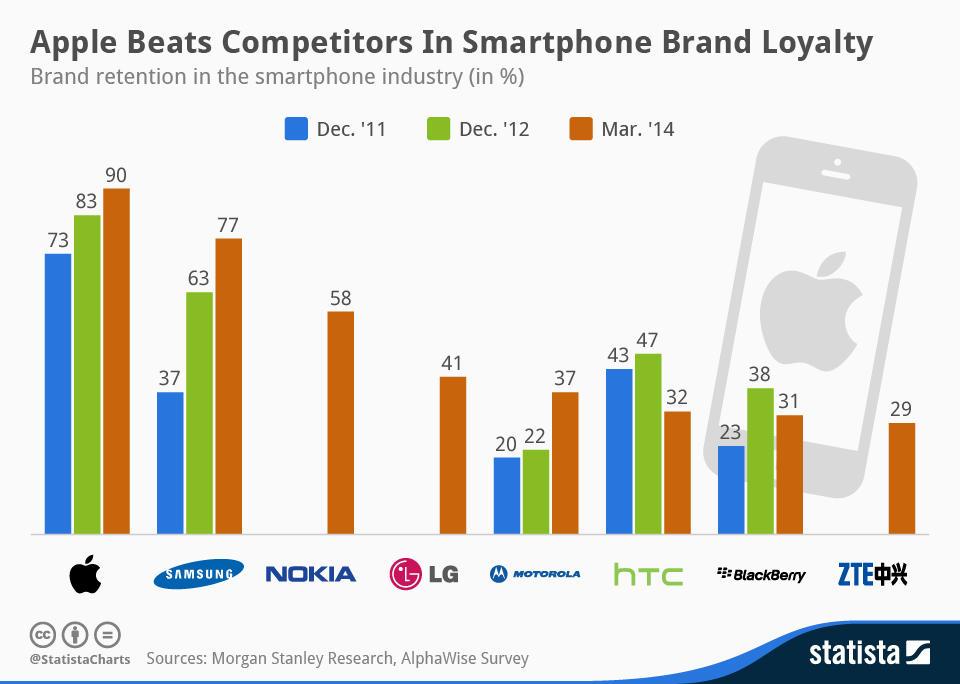
As a rule, the branding strategy of the organization boils down to focusing on the innovation aspect of the products promoted (Haslehurst et al. 2015). Particularly, Apple, Inc. often puts a stake on its reasonable pricing strategy (Xin & Endong 2013). A 2012 study shows that the emphasis on quality combined with a reasonable price has defined the longevity of the organization’s success in Europe and the USA (Johnson et al. 2012). The above-mentioned approach is beyond adequate in the economic environment, where numerous organizations strive for attracting more customers yet have to take impressive costs to produce the devices of the corresponding quality. Indeed, the price–quality correlation, which Apple has been maintaining for quite long, has been registered on many people’s radars (Lee & Ho 2013). Nevertheless, in some economic environments, the suggested approach may fail to deliver the same exceptional results due to the specifics of the local population’s perception of gadgets (Amirusefi & Ahrari 2012). China is a graphic example of the aforementioned phenomenon (Poon 2014).
Studies have shown that Apple’s branding strategy revolves around the communication and entertainment opportunities, which its products have to offer the target customers (Penson & Brosdahl 2013). In most cases, the aspect of pricing as a branding strategy is often ignore despite the fact that is forms one of the primary indicators of customers’ satisfaction or dissatisfaction with a brand (Hu, Huang, & Zhang 2013, p. 54). The organization has always managed to introduce gender-related images in a subtle manner, such as the use colour codes as the means to stratify its target population. Particularly, the fact that iPhone 6 comes in gold and silver colours should be mentioned as an attempt to trick female buyers into considering the purchase or a feminine colour should be introduced (Griffiths 2013).
Chinese Customer Behaviour
Chinese customers are characterized by their passion for exotic and expensive products (Alon, Littrel, & Chan 2009). The given feature of character is typical for young Chinese people, even though adults are often guided by the need to show off their wealth to upgrade their social status (Rein & Roy 2012). To be more exact, the idea of displaying one’s wealth and financial independence stems from the concept of the Chinese culture known as Mian-zi, which is typically rendered as the “face culture” (Zhou & Shanturkovska 2011, p. 20) and presupposes that one must retain one’s honour in every single domain, including business, studies, personal life, etc. Since wealth is viewed as one of the key measurement for a successful and honourable person, the significance of culture in shaping Chinese customers’ buying behaviour cannot possibly be underrated: “Identified as a part of a particular group, people do their best not to disappoint or spoil the ‘good’ image of their in group members” (Zhou & Shanturkovska 2011, p. 20).
Herein the fascination of the Chinese population with iPhone and other products that Apple provides lies. The attractiveness of the products under analysis concerns neither the quality of the connection, nor the technological advance, but the price of the gadget. Additionally, it is the availability of the expensive products that thrills the target audience (Park, 2014).
The reasons for the above-mentioned type for information technology are quite understandable. In the era, when international communication has become a part and parcel of everyday life and the availability of social network defines one’s ability to attain success in personal and professional life, the possession of tools that allow for enhanced communication is crucial for one’s prosperity and career opportunities (Jiang 2011, p. 3). The utility of the gadget is still related directly to its popularity among the audience.
It would be wrong to claim that the Chinese customers prefer to ignore the opportunities, which their gadgets open in front of them as far as the communication process is concerned. Quite on the contrary, a range of Chinese people engage in communication via social networks, and they prefer doing it with the help of their gadgets (The American Chamber of Commerce in Shanghai 2013). Nevertheless, luxury is considered one of the key reasons for Chinese buyers to consider purchasing a mobile device. Specifically, the aspect of luxury has become the leading factor that influences the purchasing pattern among the customers in China who fall in the middle class (The American Chamber of Commerce in Shanghai 2013, p. 15).
The given phenomenon can be explained by the fact that the Chinese middle-class members seem to be eager to buy expensive items to prove their wealth: “Over 70% of the middle income groups buy well-known international brands, with the progressive affluent spenders having the highest demand (84%) and conservative spenders at least 53%” (China-Britain Business Council 2011, p. 11). In fact, the very concept of luxury as the key requirement of the Chinese customers has evolved into a self-sustained phenomenon of a Chinese luxury market (Guo 2015). The main characteristic of the market under analysis shows that the phenomenon of luxury is rather complex, as it incorporates the principles of well-being on several levels, the financial one being the primary stage (The American Chamber of Commerce in Shanghai 2013). The capacity of the Chinese luxury market is considered to be more than ample (China-Britain Business Council 2011); however, the fact that the luxury market is currently at the earliest stage of its development makes the process of integrating into it and retaining the top position among the target audience very difficult (Guo 2015, p. 11).
The specifics of Chinese customers’ behaviour become quite understandable once a closer look at the essential features of the Chinese culture is taken. Guided by Maoism for the most part, the local population has rarely seen luxury, not to mention using it, in their everyday life (Ngai & Cho 2012, p. 255). However, unlike buyers from Europe and the United States, who seek the goods of a sensible price-quality ratio, Chinese buyers prefer high prices as the mark of the above-mentioned concept of luxury. This type of behaviour is especially characteristic of the younger generation, whereas middle-aged Chinese people still conform to the tradition foisted on them by the Maoist regime (Ngai & Cho 2012).
Culture-Based Branding in China
The idea of culture-based branding is not new (Wang 2011). A range of companies decide to brand their products for male and female denizens of the population separately (Management Association 2014). In fact, a number of organizations have already tried the specified approach in China (Wang 2011). Moreover, studies show that the specified strategy can be deemed as one of the most successful approaches ever practiced in China (Stolz 2014). Particularly, the approach in question seems to have an effect on the female denizens of the Chinese population (Management Association 2014, p. 1101). Nevertheless, studies also show that the culture-based approach affects Chinese men, too (Stolz 2014; Sechiyama 2013).
Other Factors Affecting Apple’s Branding Strategy
Although the Apple Company seems to have a range of rivals in the global economy environment, the competitors have certain problems in developing brands. To be more exact, these organizations may devote an increasingly large amount of time for the development of a viable brand product, which affects their position in the target market and devalues its products in the eyes of customers: “There are several avenues by which new competitors may enter the market, but they face substantial hurdles in successfully establishing a viable brand” (Masi 2009, p. 3). Apple, on the contrary, spends relatively little time on the very process of creating the brand (Cheah 2012). Instead, the firm devotes much time to research and development, thus, increasing its chances of succeeding and expanding its influence. Moreover, the organization deploys proprietary systems, as well as the use of brand loyalty, as the tools for keeping customers’ attention glued to Apple’s products (Masi 2009).
The strategy used by Apple, Inc. can be summarized by using the halo effect concept (Cheah 2012). This concept refers to the movement of a product brand of a single company to ensure that the sales are increased (Cheah 2012, p. 22). As the existing explanations of the subject matter show, the given strategy presupposes that a certain product should be promoted in the shadow of the one that became a major success and gained extensive recognition as a brand: “While brand halo certainly may exist for certain brands at certain times (e.g. as may have been the case recently for Apple), we find in real market data that in many instances brand effects vary across benefits” (Raggio, Leone, & Black 2014, p. 134). On the one hand, the approach in question can be deemed as fairly reasonable, since the brand product is likely to draw the attention of the target customers more than the rest of the products anyway; it will be adequate to use it as a tool for promoting less popular yet nonetheless useful and high-quality products.
Apple’s Branding Strategy in China
As researches show, the branding approach designed by Apple works quite well (Apple 2015b); however, the company may face serious competition in the Chinese market after the introduction of the Samsung products in the target environment (Thunman 2012). Indeed, the tools, which both companies adopt in order to attract the attention of Chinese youth, are strikingly similar. To be more exact, both Samsung and Apple strive for creating brand equity in the target area by reinforcing brand loyalty and awareness (Hoek 2014). However, these are the tools used by the companies that define the difference in their approaches and set them apart as competitors (Thunman 2012).
Changes to the Traditional Branding Approach
Researches show that Apple, Inc. made a number of changes in order to adapt its branding strategy to the realities of the Chinese economic environment and culture (Shalhoop & Sanger 2012). The company has evidently taken a range of facts about the Chinese people into consideration when creating their branding approach and entering the target market (Denlinger 2010, par. 13).
Particularly, Apple has addressed the aforementioned element of the Chinese culture concerning the correlation between the price and the status of the product. Specifically, the fact that the organization never reduced its prices in China deserves to be mentioned. Indeed, unlike in other state, where Apple conducted the policy of flexible prices, in China, iPhones and other gadgets have always been sold at high prices, several companies following its example (Blodget 2015). Additionally, little to no discounts has been offered to the Chinese customers since Apple started its promotion campaign in China. The organization clearly follows the current traditions of the Chinese society, since 91% of respondents to a local survey claim that Apple’s products fit their lifestyle perfectly (Wang, Chan, & Yang 2013, p. 57). Seeing that Chinese people value the price of the product as one of its key assets, for instance, the marker of their social status, Apple, Inc. decided to promote its products as luxury and expensive (Linshi 2015) in the specified market: “The Apple Watch’s biggest advantage in China is deceptively simple: few Chinese consumers laugh when Apple touts the device as a luxury item. Apple became China’s top luxury brand for 2015” (Linshi 2015, par. 16).
It would be wrong to assume that Apple’s marketing strategy in China is restricted to showing how expensive a specific gadget is. Quite on the contrary, the organization also uses an array of tools for attracting Chinese customers. For instance, the company seems to put a very strong emphasis on the importance of seemingly pointless technological advances for an average citizen (THE DILENSCHNEIDER GROUP 2015). Particularly, the fact that Apple’s current CEO, Cook, plans to address the characteristics of the products that could be seen as “geeky” (Ryan 2015, par. 15) should be brought up.
Apple also counts on its technological advancement as the primary asset of its products. To be more exact, it is the combination of technology and price that made Apple so popular in China. If Apple had not been a world renowned brand by the time that the company entered the Chinese market, and Apple had not become a household name, the pricing strategy would not have helped establish a strong presence in the target market. If anything, the specified policy concerning the absence of discounts and quite costly products would have distracted the customers. However, seeing that Apple had already become the global leader by that point, buying its products at a rather high price meant becoming a part of the elite for young and impressionable Chinese customers (Jiang, Peng, & Liu 2015).
The fact that Apple’s success in China was due to the original pricing policy coupled with a passion for innovative solutions can be supported by recent changes in the popularity of the organization’s products in China (Statista 2015, par. 1). According to the recent statistics, the company experienced a significant drop in the number of its Chinese customers (KPMG 2015) who have switched to cheaper luxury phones offered by competitors such as Huawei and Xiaomi (Sikka 2015). The fall in market share of the Apple brand could be attributed to change in preference of customers who demand for luxury at the most friendly prices (Sikka 2015, par. 4).
Research Hypotheses
H1: Apple should not discontinue its current luxury market-oriented branding strategy in China as most customers value the company exactly for the given characteristics of its product.
The specified hypothesis implies that Apple should not discontinue the current marketing strategy.
H2: The organization needs to add new elements to its brand, such as integrating Chinese cultural orientation in its branding strategy.
Hypothesis 1B presupposes that the Chinese customers may become tired of Apple’s branding approach due to the Chinese buyers’ cultural specifics on taste, preference, and attachment to social values.
H3: Unless the company connects the branding strategy currently used in China to Apple’s mission, vision, and values, the products promoted to the Chinese customers will lose their appeal and Apple will witness a drop in the number of customers leading to a branding failure.
The hypothesis mentioned above assumed that linking the branding strategy of the company under analysis to its values and mission will help attract more clients.
Research Questions
- Seeing that there is a possibility of Apple losing its significance for the Chinese customers once the company puts the emphasis in branding solely on luxury as the key property of its product, should the next update of Apple’s branding strategy be based on gender-related characteristics?
- Will the perceived image of Apple’s products change if the firm abandons the current branding strategy (i.e., the promotion of its products as luxury ones) and shifts to a new principle of branding?
- To what extent do the unique characteristics of Chinese customers’ buying behaviour may affect Apple’s decision-making and choices as far as its branding approach is concerned?
- Will the addition of new elements to the current desired image of the company’s products affect the perceived image negatively?
- Can the current perceived image of Apple’s products in China be altered and yet retain its popularity among the target customers?
- Will it be possible for Apple to align the new brand image of its products in China with the company’s mission and vision without destroying the existing one?
Methodology
Overview of Methodology Structure
The study is aimed primarily at identifying the effects, which the specifics, of customer behaviour in China have had on the branding strategy, which Apple adopted to market its products to the target denizens of the Chinese population. As part of the literature review, the study has already addressed the empirical and theoretical aspects of branding in general and as applied by the Apple Incorporation within the Chinese market. Through quantitative, the study will aim at ensuring that the results are reliable by applying appropriate data collection and analysis tools. Specifically, the study will target 215 potential Apple customers within the Chinese market as the target population through random sampling via a questionnaire consisting of 20 questions. Quantitative data collected will be analysed using Excel and other statistical tools appropriate (Sharif 2015). The secondary data from the literature review will be used to support the findings from primary data.
Research Philosophy
The scientific dimension of this study will adopt the logical positivism approach to ensure that the quantitative research is efficiently integrated and analysed. Logical positivism “is an approach to philosophy that was inspired by rapid and dramatic developments that had taken place in physical science and mathematics” (Mangal & Mangal 2013, p. 160). This approach will be used for carrying out the quantitative research since it is considered as one of the most efficient tools for analysing quantitative data (LoBiondo-Wool & Haber 2014, p. 580). This approach is significant since it “makes use of intellectual analyses for the purpose of clarifying definitions, identifying ethics, or making a value judgment concerning an issue in their field of study” (Mangal & Mangal 2013, p. 161).
Logical positivism was selected since the research required consistent use of the appropriate tools for analysing and applying primary and secondary data. Using this approach will ensure that the correlation analysis between variables such as the customer awareness, gender, and brand image are properly relate to the current branding strategies adopted by Apple in the Chinese market (Miller & Heather 2014).
Research Approach
The study will adopt deductive research approach to ensure that the dependent and independent variables are related to the findings of primary and secondary data. Deductive research approach “is concerned with developing a hypothesis (or hypotheses) based on existing theory, and then designing a research strategy to test the hypothesis” (Mangal & Mangal 2013, p. 163). In relation to this study, the deductive strategy will be vital in relating findings to the three research hypotheses developed earlier at the literature review section of the research. The research on Apple’s branding strategy is intrinsic of the prognostic situations that the targeted respondents will identify concerning their perceptions about the Apple brand.
Research Design
The researcher will adopt descriptive statistics through a research survey approach with closed-ended questions as part of the primary data. According to Mangal and Mangal (2013), descriptive statistic “is the discipline of quantitatively describing the main features of a collection of information, or the quantitative description itself” (Mangal & Mangal 2013, p. 163). Since the primary focus of the paper is to establish the perception of customers in the Chinese market towards the branding strategies adopted by Apple, descriptive statistics will be significant in describing their perceptions and reactions towards the brand Apple as part of the quantitative analysis.
As far as the quantitative design is concerned, the research will presuppose a basic statistical tools analysis of the responses to the questionnaire. Particularly, the study of the extent, to which Apple had to alter its strategy, as well as the difference, which the current strategy makes compared to the one that Apple, Inc. uses traditionally needs to be identified. Afterwards, the analysis of the quantitative data retrieved will have to be carried out in order to see the changes that Apple, Inc.’s branding approach has suffered and the extent, to which it differs from the company’s current values and standards.
Survey
According to Miller & Heather (2014), research survey is “a method of sociological investigation that uses question based or statistical surveys to collect information about how people think and act” (Miller & Heather 2014, p. 56). Through the use of the survey questionnaire, data will be collected from 215 participants using semi-structured closed-ended questionnaire that would allow a researcher to be curious. This approach will offer the study psychological, interpretative, and idiographic characteristics of the participants.
Based on the literature review, a twenty-item questionnaire will be used in the study since the research survey focuses on establishing perceptions and behaviours of participants towards the Apple brand. The study questionnaire will be created by proper application of the 5- point Likert scale (LoBiondo-Wool & Haber 2014). This will allow all the respondents to actively participate since all the questions have ‘yes’ or ‘no’ answers. The choice of questionnaire was informed by its affordability and convenience, especially when the sample space is relatively small.
Sampling Strategy
Sampling strategy refers to the process of collecting data from a section of the population that is chosen in a systematic manner. In order to review a study phenomenon, picking a sample population in appropriate manner may represent the views of the entire population. The study targets potential users of Apple products within the Chinese market.
This research study will aim to target potential customers who are chosen in a random but systematic approach that covers the 215 respondents. This sampling space will accurately represent the reality on the ground. The sampling of the target population will be done through random sampling in the form of snowball to accommodate different trait and perceptions of the respondents. Through convenient sampling, the research will be in a position to sample respondents with different characteristics such as gender, age, social status, and buying characteristics among others. The first procedure will be piloting the questionnaires through ten respondents after which the rest of the questionnaires will be sent to potential respondents.
Questionnaire Design
In order to carry out the study properly and consider the aspects of the Chinese customer behaviour, which Apple, Inc. had to address in order to succeed, one will have to understand the reasons behind the Chinese customers’ consumer choices. Therefore, research participants will have to share their opinion regarding the subject matter and explain what motivates them to buy Apple products in a twenty-item questionnaire. The twenty questions are aimed at determining the change in Chinese customers’ attitude towards the products that Apple has been supplying over the past few years. Particularly, the alignment of Apple’s strategy with the specifics of the buyers’ behaviour in China is to be identified with the help of the questionnaire mentioned above.
The questionnaire was designed with the help of the Likert-type scale. The participants will answer to the yes-or-no questions offered to them by using a five-level scale including the responses that allow for determining the rates of Chinese customers’ obsession with Apple products. As a result, the efficacy of the current strategy designed by Apple will be identified. Additionally, the link between the social status of a Chinese customer and the label of the gadgets that they possess will be identified in the course of the questionnaire responses analysis.
Data Collection and Data Analysis Method
Primary Data
Primary research entails carrying out an investigation on a problem by collecting data from the study participants and analysing them. According to LoBiondo-Wool and Haber (2014), it includes first-hand information gathered afresh through primary data collection methodologies, including direct observations, surveys, and even interviews. For the purpose of the proposed research, primary data will come from questionnaires targeted at participants from the Chinese market who are potential customers of Apple products. As recommended by Mangal and Mangal (2013), akin to this proposed research, structured questionnaires with a set of predetermined questions will aid in collecting the needed primary research information, with the researcher employing highly standardized recording techniques.
Secondary Data
Secondary data refers to information gathered from existing research publications on studies undertaken from various grounds, but carrying similar theme. According to Miller and Heather (2014), “secondary market research refers to any data gathered for one purpose by one party and then put to a second use by or made to serve the purpose of a second party” (Miller & Heather 2014, p. 56). The main sources of secondary data will be journals, books, and other reports and publications that will enrich the intended research with a powerful background. With different commentary obtained from existing research publications, the study will manage to gain a comprehensive insight into the research problem examined. Secondary data will help in consultations, setting objectives, and assessing theories and related arguments in the existing empirical evidences.
Data Analysis
The primary data collected will be synthesised and analysed to provide sensible meaning and interpretation to ensure that there is a sensible conclusion of the research study. As opined by Miller and Heather (2014), it is vital to review the quantitative data to ensure that there is a systematic analysis of the numeric data. The data gathered from the field and journals will be analysed through the Excel software.
Ethical Issues
Ethics is very significant in research since it acts as a guide to the basis of evaluating moral obligations of research (Mangal & Mangal 2013). These obligations determine the balancing of confidentiality and approval from the participants. This means that there is a need to assure potential participants of their privacy and confidentiality before and after engaging in the research study to guarantee protection of the rights of the third parties. This is achieved through designing a comprehensive informed consent form as a legal document that protects the participants from any unethical issues (Miller & Heather 2014). The researcher will ensure that these obligations are addressed.
Besides, the researcher will seek permission from relevant authority to ensure that ethical approval processes are at par with the scope and nature of the research. This will ensure that the subjects of the study are assured of their privacy and voluntary participation.
Findings
Introduction
This part of the research study presents the findings from the primary data in the methodology part of the paper. The findings summarise the responses and results of the questionnaire as discussed below.
First hypothesis
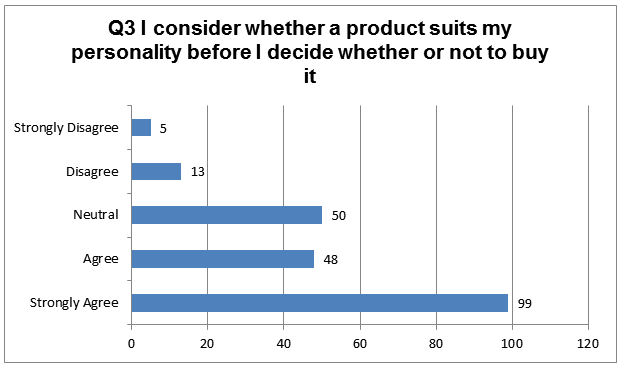
As indicated in figure 12, 147 respondents noted that product compatibility with personality was highly significant towards their decision of embracing the Apple brand. Only 18 respondents (8%) do not condiser the apsect of personality in embracing the Apple brand.
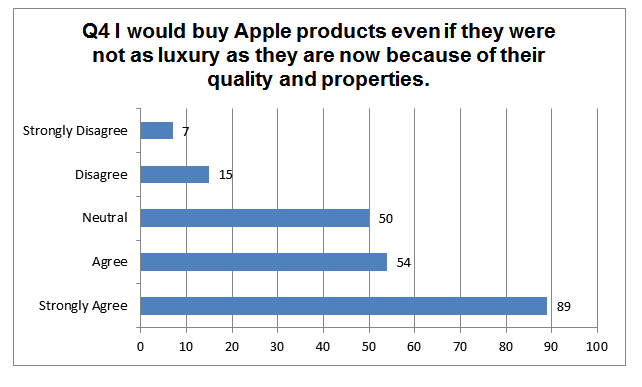
As indicated in chart 13 above, 143 respondents noted that their purchasing decisions were not entired determined by luxury. Rather, the aspect of quality and traits of a product are the key determinants of their purchasing decision. Only 12 respondents (5.3%) noted that they preffer luxury as the primary determinant of purchasing decision.
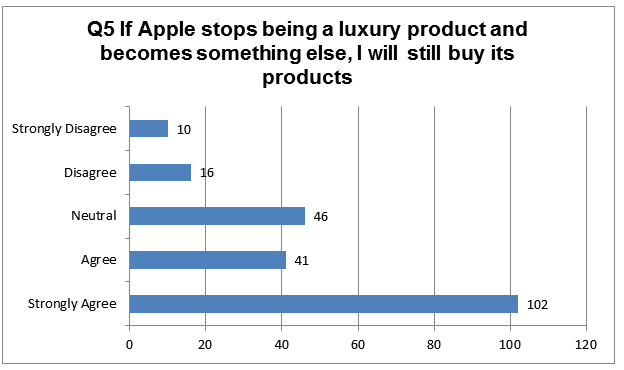
According to the graph provided above, 143 people out of 225 (63.5%) expressed their willingness to buy Apple’s products even if the organization stops positioning itself as a luxury product.
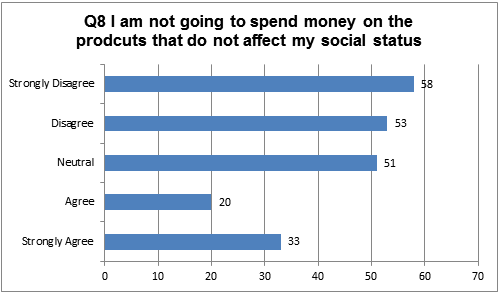
It should also be noted that one of the questions returned rather unexpected results. Particularly, the answers to the question contradict Hypothesis 1A in a very obvious manner. Particularly, the chart provided below displays the Chinese customers’ negative attitude to the idea of purchasing the good that could be bought at a much lower cost.
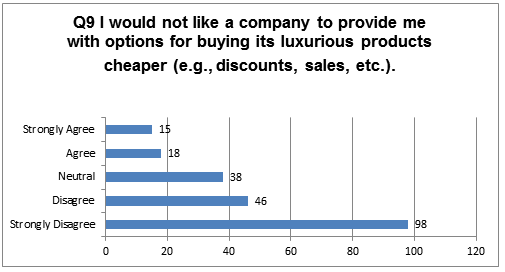
According to the data provided above, 98 (43.5%) customers would not like a company to discontinue its pricing policy. The specified percentage of the responses in the “strongly disagree” section is the highest one of all the responses retrieved in the course of the research. Indeed, a closer look at the specified section will reveal that the specified number is 32.75 pints higher than the average of the answers in the” strongly agree” section (65.25). 33 respondents (14.7%) claimed that they need products that affect their social status.
Second hypothesis
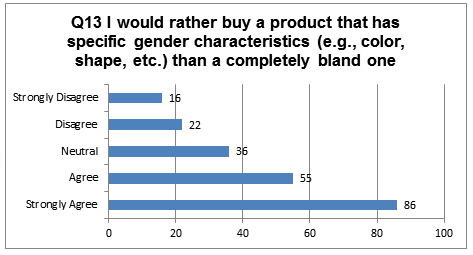
From the above chart, most of the respondents (141) are willing to buy the products that they can identify with (See Appendix C). Although 22 respondents (9.8%) disagreed with the specified suggestion and 16 people (7.1%) were strictly against the innovation, the majority, including 86 (38.2%) and 55 (24.4%) supported inclusion of cultural traits in product branding. Particularly, 62.66% of the respondents are willing to have Apple products, which have unique gender characteristics, such as colour, shape, and size.

As indicated in figure 18, 133 respondents agreed that the aspect of cultural branding on the basis of factors such as gender should be introduced into the market. Those who agreed with the aspect of cultural branding amounts to 59.1% of the respondents.
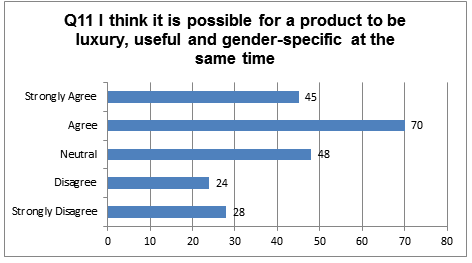
As the survey results show, most customers (particularly, 70 and 45 out of 225 (31% and 20% correspondingly)) are perfectly sure that the organization could incorporate the two concepts into its general branding approach and, thus, provide the Chinese buyers with both options. Interestingly, 48 (21.3%) of the research participants were neutral about the idea of Apple incorporating a different strategy into its branding framework.

Although 82 (36.4%) respondents display a comparatively neutral attitude towards the re-branding process, 56 (24.9%) people feel strongly negative about the subject matter. Out of 225 people, 76 (33.7%) claimed that they are neutral about the organization promoting its products from a different perspective. Although the data on the subject matter is very diverse, the standard deviation of the positive responses provided by the research participants (25.6) show that the hypothesis in question can be considered supported.
Third hypothesis

As indicated in figure 21, 127 respondents (56.4%) strongly agreed that corporate values are significant in the acceptance of the current Apple’s branding strategies. In general, 175 respondents (77.77%) agreed that corporate values are vital in successful branding strategy. In fact, only 7.1% of the respondent did not relate corporate values to successful product branding by the Apple Incorporation (See Appendix C).
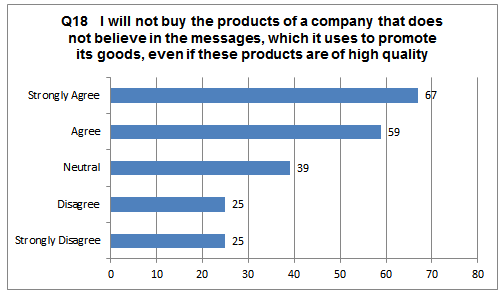
As indicated in figure 22, 121 respondents (53.77%) are not willing to buy Apple product that do not have adhere to their perception on honesty and company values. In fact, only 22.2% of the respondent indicated that they do not mind about company values such as honesty when embracing a brand. However, 39 respondents (17.3%) of the respondents were neutral on the strength they attach to company values as determining their acceptance of a brand.
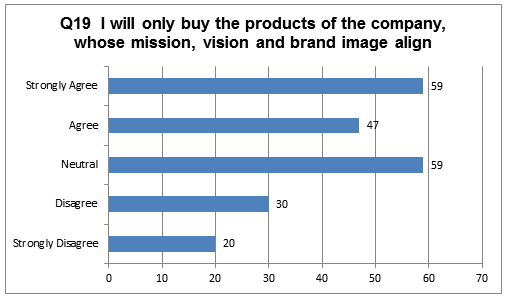
As indicated in chart 23, 106 respondents (47.1%) noted that brand acceptance is directly related to the way the product image is alligned to mission and vision of the Apple brand. Only 50 respondents disgareed.

As indicated in figure 24, 113 respondents would not buy a brand product that contradicts company vision and values. Only 42 respondents (18.66%) would buy a brand product that contradicts company mission and values. However, 24.88% of the respondents were neutral in answering this question.
Validity and Reliability
Although certain discrepancies in participants’ answers to particular questions can be spotted, the validity of the study can be deemed as high. Indeed, the answers to the questions related to each of the three hypotheses reiterate the same idea for the most part. To be more exact, the answers point to the need of Chinese buyers to purchase the products that will identify them as wealthy and at the same time original. The reliability of the study is also very high, as the research methodology was designed in an elaborate manner and carried out according to the basic tenets of the scientific method. The principle of internal validity has been followed as well, since the study includes sample groups randomisation (Johnson 2013).
Likewise, the correlation and linear regression analysis, which is implemented after the data is gathered, allows for making the data all the more reliable, First and most obvious, the linear regression method helps organize the data and trace a certain pattern in it. In addition, the specified analysis tool serves as the means of predicting the future changes in the customer behaviour and the attitude of the target Chinese population to the branding approach adopted by the organization. Hence, the reliability of the study can be deemed as high (Johnson 2013).
Results Discussion
The data retrieved in the course of questionnaires analysis has shown that Apple has very strong chances of success through its current branding strategy in China since more than 63% of the respondents have accepted Apple products as meeting their expectations. Although minor threats can be expected, such as the lack of interest among Chinese customers to the value and ethical principles, which Apple is based on, the answers to the questionnaire show that Chinese buyers are inclined to accept new concepts of a brand image along with Apple’s current luxury-driven one.
It should be kept in mind, though, that the idea of target population stratification may not align with the key tenets of the corporate ethics of Apple. Indeed, according to the information issued by Apple recently, the organization is willing to promote itself as not only a technologically advanced organization, but also as a revolutionary. Nevertheless, the organization clearly needs to make sure that its vision and mission align with the current representation of the organization’s branding strategy. The survey results have shown that most Chinese people want to be treated as smart adults. This means that the company should be proactive in ensuring that the current and future branding strategies observes the aspect of customer centricity.
First hypothesis
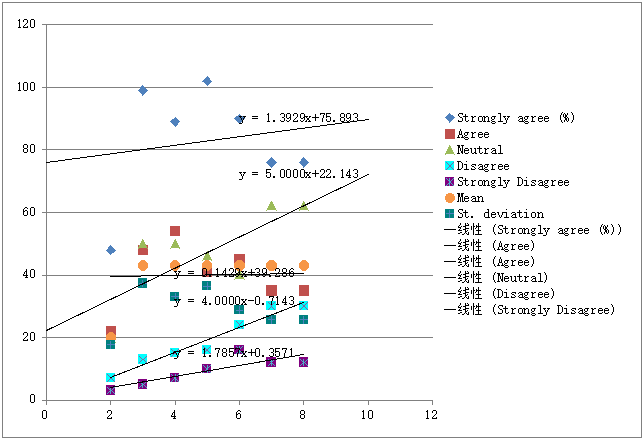
As the diagram provided above shows, the Chinese customers agree that Apple should continue branding its products as luxurious. Eliminating the specified concept from the company’s brand product in China does not seem reasonable. Thus, the current principle of promoting Apple products as luxury and offering it at comparatively high prices must not be discontinued. The diagram shows clearly that people feel safe about their financial status only when the products that they buy are luxurious enough. Reinforcing the concept of luxury as an integral part of Apple’s brand is the right thing to do.
It should be noted, though, that the answer to the seventh question may raise a few concerns. According to the responses of the participants, a rapid shift to an entirely new strategy may result in people ceasing to view Apple as a luxurious product; the Chinese customers may lose their interest towards the product quite rapidly. Nevertheless, the fact that Chinese people are ready to accept Apple as an innovative organization and not a source of luxurious items shows that the firm may have a chance of reinventing its branding strategy and at the same time retaining its success. For instance, the fact that a range of respondents indicated that they are not going to stop purchasing products that do not change their social status shows that Apple could take risks and alter its branding approach and the brand image along with the brand strategy significantly.
It deserves to be mentioned, though, that most customers are surprisingly neutral on the subject matter. According to the scatter plot provided above, the trend line showing customers’ neutral attitude towards the subject matter has the strongest potential; Apple, Inc. has a significant chance of impressing the Chinese customers and tricking them into paying attention to the product in question as opposed to following the demands of the crowd. The specified trend provides Apple with enough freedom in choosing the appropriate branding strategy and introducing the elements of innovation into its branding formula.

The company will need to take chances and incorporate its values and mission into its China-oriented branding strategy. By creating a branding approach that will help Apple promote its idea of technology becoming an integral part of every person’s live, the company will attract new customers and keep Chinese people’s curiosity about the firm’s products at a high rate based on the study results. In fact, it can be assumed that the specified research results have a lot to do with the age of respondents; as the graph above shows, the number of “strongly agree,” “agree” and “neutral” responses are in an inverse proportion to the participants’ age. The specified fact proves that young denizens of Chinese population seek luxury and that the current strategy adopted by Apple is not to be discontinued. This shows that the organization must not abandon its current luxury-based branding policy. The first hypothesis (H1A) can be considered supported.
Second hypothesis
Although the idea of branding products as gender-specific ones is not new, it is likely to be very successful with the Chinese audience. In the light of the fact that the latter are gradually losing their enthusiasm for Apple’s products, creating another ploy for their attention and the increase in the number of customers is a very legitimate step (Armstrong & Yee 2012). Indeed, the chart provided above shows that the possibility for Chinese people to be excited about gender-specific Apple products is very high.
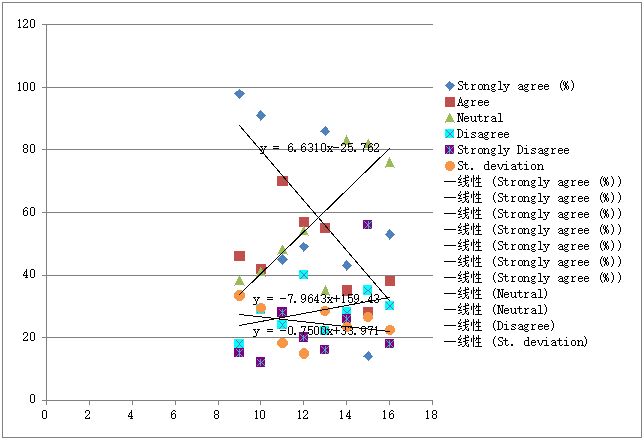
The chart provided above shows quite clearly that the organization should continue developing the idea of gender-specific branding. Although the approach in question cannot be deemed as new and has been used by a range of companies (Lieb 2013), it still needs to be recognized as viable in the Chinese society. As it has been stressed in recent studies, Chinese buyers have a very strong and rigid concept of gender (Chen 2014); it is desirable that the target audience could enjoy the products that could help them put stress on their belonging to a specific gender.
It is quite remarkable that most respondents do not seem to feel strong about the idea of introducing gender differences into the branding approach adopted by Apple a good idea. Nevertheless, the hypothesis can be considered viable, as most of the participants displayed the absence of any negative emotions concerning the idea of culture-based branding and two types of brands, i.e., the male and the female ones, correspondingly. Indeed, as the chart provided below shows, both male and female respondents were eager to accept a new culture-based approach (Alon et al. 2009).
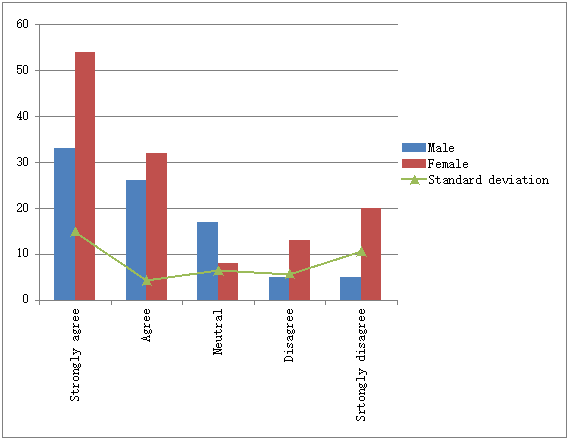
The chart shows clearly that the idea of changing the current branding strategy completely is likely to have a range of unpredictable effects on the target population. According to the chart above, the study participants had general ideas of how the Apple product can be improved and whether it should be. Hence, the effects of a drastic change in Apple’s branding approach are rather questionable, which leads one to the conclusion about the lack of reasonability of changing the firm’s branding approach in its entirety. Instead, the company leaders should consider the option of integrating both the concept of luxury and the idea of gender-related elements into Apple’s branding campaign (Liu 2011).
Seeing that Chinese buyers are characterized as impulsive (Chen et al. 2011), as it has been stressed above, Apple leaders may consider the idea of creating hype about one of the latest products that it has issued recently. As soon as the organization manages to introduce the concept of technological innovations and digital tools as the elements that contribute to building one’s social status, it is likely that the target customers will start buying it. In contrast to the previous instance of a branding strategy, though, the new one will align with Apple’s mission and vision, which concern making life easier with the help of innovative technology (Apple 2015a). Since there is a significant gap between Apple’s mission and culture-based stratification of customers, it will also be reasonable to incorporate the concepts of acceptance and tolerance into the mission and vision of the organization so that the product could look more credible in the eyes of Chinese customers (He 2010). The specified findings confirm the hypothesis regarding the reasonability of adopting a gender-related branding strategy by Apple, Inc.
Third hypothesis
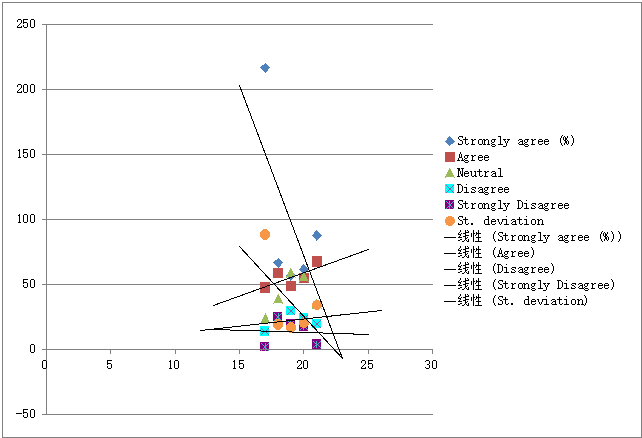
As the chart displayed above shows, the possibility for the organization to connect the new branding strategy in China to its current values and vision are rather high, as people are willing to buy the products that are based on the organization’s philosophy (Armstrong & Yee 2012). The study outcomes, however, also point at the need to create the selling point, which the Chinese customers will be interested in. For instance, the organization may suggest its Chinese clients the technology, which will help them submerge into the future (Apple 2015b). In other words, an elaborate branding strategy, which will involve the brand that will create certain hype about Apple’s products, is strongly recommended in the specified case. As far as the mission and values of Apple, Inc. are concerned, the responses of the questionnaire participants can be viewed as mixed. On the one hand, the study participants indicate it quite clearly that they want companies to be honest with them about the products that they offer. However, the participants of the research have also stated that they might consider the alignment of the company’s branding strategy with its goals and vision unnecessary.
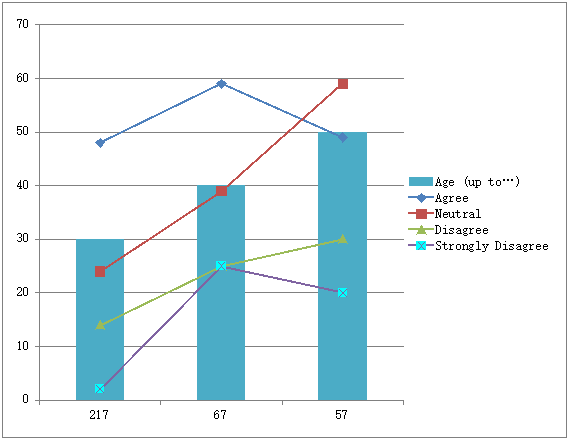
The fact that 127 people out of 225 wanted Apple, inc. to be completely honest with them about the products that it serves shows that Chinese buyers may be ready to accept the company’s mission and vision and relate them to Apple’s brand product. In other words, the statistical data retrieved in the course of the analysis indicates that the organization has an opportunity to incorporate its values and mission into the brand identity, which it is trying to establish in China. Apart from serving merely as the reason for bragging, Apple’s products will promote the idea of technology as an integral and indispensable element of their regular life (Zhou & Shanturkovska 2011).
As the responses to the questionnaire show, Chinese consumers are willing to purchase the products of the organization, which is honest with them about its goals, mission and values. Hence, the hypothesis regarding the significance of Apple building its improved branding strategy on its missions and vision can be considered a legitimate step to make. However, a relatively vast amount of the research participants agreeing that values of an organization need to be spelled out by its members, the fact that Apple must enhance the role of its values in creating its branding approach is still doubtless.
Apple’s branding will need to include the ideas of technology as the part and parcel of everyday life, as well as gender-related products, so that the specified goods could be sold to the target population successfully (He 2010). It is suggested that the organization should consider its mission and vision as the essential elements of its branding strategy in China prior to introducing the goods to the market. It should be noted, though, that the process of integrating the specified products into the designated market will have to be carried out in a subtle manner. An elaborate strategy that will help get the message concerning the fusion of high-tech future and luxury will have to be designed. Since the scatter graph displays the lack of agreement among the respondents concerning the way, in which the organization will have to evolve, a very subtle approach towards branding Apple’s products as gender-specific needs to be adopted (Ngai & Cho 2012).
Research Limitations
As mentioned earlier, insufficient information exists concerning Apple’s branding strategies in the Chinese market from secondary data. The study might not have captured accurate data that can be related to the different market segments in China. Furthermore, the capabilities and resources available did not allow for expansive sample space (Baron 2013). Therefore, the Apple Incorporation might need to consider other factors when implementing the recommendations. There is need to balance the branding strategies and the current trends to ensure that imbalances because of potential biases do not form the basis for future blending strategies.
Conclusion
The significance of a brand image of a company cannot possibly be overrated (Alon et al. 2009). Serving as the tool for expressing the company’s intentions and attracting new clients, a brand image contributes to the popularity of the brand and its recognition among the target population (Armstrong & Yee 2012). It is crucial that a brand should be based on the company’s values and standards, such as high quality and innovative technology. However, as Apple’s case with Chinese customers shows, the importance of addressing luxury-related issues when branding a product is also very high.
As the results of the questionnaire show, the organization also needs to incorporate the principle of culture-based design into its framework. Indeed, seeing that most of the respondents agreed that the characteristics of a product, which allow them to express themselves, should be integrated into the product. In addition, most participants have stated that the introduction of gender-related characteristics. The specified information opens a plethora of new opportunities for the company to link its current values and the brand image of their product in China; as a result, a significant rise in the overall sales in the designated area is expected (Dinnie 2010).
Changing a branding strategy to adopt it to the specifics of buyers’ behaviour in the designated market is an essential part of any company’s evolution (Brown & Ponsonby-McCabe 2014); otherwise, organizations would be incapable of functioning in the global market (Johansson & Klarsson 2014). However, in some instances, the branding approach that is traditionally used by an organization does not align with the needs of the target customers due to the specifics of their culture and national identity (Anheier & Isar 2012). Bending its values in order to adjust to the needs of the target audience may lead to a drastic drop in popularity of the brand and the number of customers (Gamesman 2012).
It is recommended that the organization should adopt the branding strategy that could stratify the target population into several groups based on their gender as a cultural branding strategy. The brand image, in its turn, may also be altered guarantee customer centricity, therefore, allow the company to attract more customers, as well as enhance brand loyalty among the existing ones (Jiang et al. 2015).
Reference List
Alon, R, Littrel, F, & Chan, A.K 2009, ‘Branding in China: global product strategy alternatives,’ Multinational Business Review, vol. 17, no. 4, pp. 123–142.
Amirusefi, R & Ahrari, M 2012, ‘Survey the effect of perceived quality on brand equity for SAMSUNG brand from the viewpoint of Iranian consumers,’ Journal of American Science, vol. 8, no. 9, pp. 873–877.
Anheier, H. K, & Isar, Y. R 2012, Cultures and globalisation: cities, cultural policy and governance, SAGE, Thousand Oaks, California.
Apple 2015a, Analysis of Apple Inc business strategic unit (iPad unit). Web.
Apple 2015b, Apple press info 2015, Web.
Armstrong, R. W, & Yee, S. M 2012, ‘Do Chinese trust Chinese? A study of Chinese buyers and sellers in Malaysia,’ Journal of International Branding, vol. 9, no. 3, pp. 63–86.
Balmer, J. M. T 2012, ‘Corporate brand management imperatives: custodianship, credibility, and calibration’, University Of California, Berkeley, Review, vol. 54, no. 3, pp. 6-29.
Baron, M 2013, Probability and statistics for computer scientists, 2nd edn, CRC Press, Roca Baton, Florida.
Berg, B 2013, Retail branding and store loyalty: analysis in the context of reciprocity, store accessibility, and retail formats, Springer Science & Business Media, New York City, New York.
Blodget, H 2015, This article explains why Apple makes iPhones in China and why the US is screwed, Web.
Brown, S. & Ponsonby-McCabe, S 2014, Brand mascots and other marketing animals, Routledge, New York City, New York.
Calvo-Porral, C, Martínez-Fernández, V-A, & Juanatey-Boga, O 2014, ‘Mass communication media credibility: an approach from the Credible Brand Model’, Intercom: Revista Brasileira de Ciências da Comunicação, vol. 7, no. 2, pp. 21–44.
Chan, J, Pun, N, & Selden, M 2013, ‘The politics of global production: Apple, Foxconn and China’s new working class.’ New Technology, Work and Employment, vol. 28, no. 2, pp. 100–115.
Chapman, R, Hoskinsson, R. E, & Christian, G 2012, Apple Inc.: keeping the “i” in innovation, Web.
Cheah, E 2012, ‘Influence of rationality and perceptual processes on managerial decision-making,’ Cross-sections, vol. 8, no. 1, pp. 19–27.
Chen, Y-C 2014, New modern Chinese women and gender politics: the centennial of the end of the Qing dynasty, Routledge, New York City, New York.
Chen, Z, Huagn, Y, & Stenquist, B 2011, ‘Guanxi practice and Chinese buyer–supplier relationships: The buyer’s perspective,’ Industrial Branding Management, vol. 40, no. 4, pp. 569–580.
China-Britain Business Council 2011, China’s middle income consumers, ProQuest, Ann Arbor, Michigan.
Choi, T-M, & Cheng, T. C 2015, Sustainable fashion supply chain management: from sourcing to retailing, Springer, New York City, New York.
Clifton, R 2010, The economist: brands and branding, Profile Books, London, UK.
Denlinger, P 2010, For Apple, the best China strategy was not having one, Web.
Dinnie, K 2010, Nation branding, Elsevier, Burlington, Massachusetts.
Fan, Y 2010, ‘Branding the nation: towards a better understanding’, Place Branding and Public Diplomacy, vol. 6, no. 2, pp. 97–103.
Froud, J, Johal, A, Leaver, S & Williams, K 2011, Apple business model. Financialization across the Pacific, Web.
Ganesman, S 2012, Handbook of marketing and finance, Edward Elgar Publishing, Northampton, Massachusetts.
Gazzola, P, & Colombo, G 2014, ‘Ethics and CSR: the strategy debate,’ Confluências | Revista Interdisciplinar de Sociologia e Direito, vol. 16, no. 1, pp. 84–98.
Gibson, H. J 2013, Sport tourism, Routledge, New York City, New York.
Giesler, M, & Veresiu, E 2014, ‘Creating the responsible consumer: moralistic governance regimes and consumer subjectivity’, Journal of Consumer Research, vol. 41, no. 3, pp. 840–857.
Griffiths, S 2013, Apple’s battle of the sexes: Women tend to buy the sleek, silver iPhone 5S while men prefer the plastic, white iPhone 5C’, Web.
Gross, P 2014, Growing brands through sponsorship: an empirical investigation of brand image transfer in a sponsorship alliance, Springer, New York City, New York.
Guo, W 2015, Chinese luxury market and Chinese people luxury consumer behaviour, ProQuest, Ann Arbor, Michigan.
Haaften, R. V 2015, Marketing, strategy and management, Web.
Haslehurst, R, Moran, J, & Baptist, B 2015, ‘Is Apple spreading its brand too thin?,’ Executive Insights, vol. 8, no. 1, pp. 1–3.
He, J 2010, ‘Humanity and trendiness: Key dimensions and differences in brand personality evaluation in Chinese market,’ Journal of Chinese Entrepreneurship, vol. 2, no. 1, pp. 19–35.
Heath, R 2012, Seducing the subconscious: the psychology of emotional influence in advertising, John Wiley & Sons, New York City, New York.
Hoek, K. S. V. 2014, Apple & China, INSEAD, Geneva.
Hu, C, Huang, L, & Zhang, H 2013, Consumer experience analysis: a case study of Apple Inc. from consumers’ perspective in experience marketing, ProQuest, Ann Arbor, Michigan.
Hubschmidt, E, & Lang, P 2013, Shaping efficient employer branding strategies to target generation y. a cross-national perspective on recruitment marketing, New York City, New York.
Irimes, C. L 2012, ‘Basic notions of branding. definition, history, architecture’, Journal of Media Research, vol. 5, no. 3, pp. 110–117.
Ismail, A. R 2012, ‘Understanding the factors that affect the adoption of innovative high-technology brands: the case of Apple iPhone in Malaysia’, Journal of Global Marketing, vol. 25, no. 4, pp. 226–239.
Jiang, G, Peng, L, & Liu, R 2015, ‘Mobile game adoption in China: the role of TAM and perceived entertainment, cost, similarity and brand trust,’ International Journal of Hybrid Information Technology, vol. 8, no. 4, pp. 213–232.
Jiang, H 2011, Young people’s adoption and consumption of a cultural commodity – iPhone, LSE, London, United Kingdom.
Johansson, J. K. & Karlsson, K. A 2014, Contemporary brand management, SAGE Publications, Thousand Oaks, California.
Johnson, K, Li, Y, Phan, H, Singer, J, & Trihn, H 2012, The innovative success that is Apple, Inc., ProQuest, Ann Arbor, Michigan.
Johnson, R. R 2013, STAT, Routledge, New York City, New York.
Kaneva, N 2011, Branding Post-communist nations: marketizing national identities in the “new” Europe, Routledge, New York City, New York.
Kapferer, J. N 2012, New strategic brand management: advanced insights and strategic thinking, 5th edn, Kogan Page, Ltd., London, UK.
Kong, P. S. & Yazdanifard, R 2013, The comparison between two main leaders of cell phone industries (Apple and Samsung) versus Blackberry and Nokia, in terms of pricing strategies and market demands, Web.
Konstantopoulos, N 2014 marketing and management sciences: proceedings of the international conference on ICMMS 2008, World Scientific, Washington, DC.
KPMG 2015, Luxury experiences in China 2015, Web.
Lee, C-S, & Ho, J. C 2013, ‘Strategy for value creation and appropriation in a global context,’ Proceedings of ASBBS, vol. 20, no. 1, pp. 614–618.
Lieb, K 2013, Gender, branding, and the modern music industry: the social construction of female popular music stars, Routledge, New York City, New York.
Lin, S 2009, ‘An emic decoding of “li” in Chinese successful emotional advertisements,’ Communicative Business, vol. 4, no. 2, pp. 86-97.
Linshi, J 2015, This could be Apple’s secret Apple watch strategy, Web.
Liu, J. Y 2011, ‘Tzen boutique jewelry: brand building for a small business’, Journal of the International Academy for Case Studies, vol. 17, no. 6, pp. 65–72.
LoBiondo-Wool, G, & Haber, J 2014, Nursing research: methods and critical appraisal for evidence-based practice, Elsevier Health Sciences, Louis, Missouri.
Luo, Y 2009, ‘Analysis of culture and buyer behaviour in Chinese market,’ Asian Culture and History, vol. 1, no. 1, pp. 25–30.
Management Association 2014, Marketing and consumer behaviour: concepts, methodologies, tools, and applications: concepts, methodologies, tools, and applications, IGI Global, New York City, New York.
Mangal, S. K, & Mangal, S 2013, Research methodology in behavioural sciences, PHI Learning Pvt. Ltd., New Delhi.
Marketingminds 2014, Apple’s branding strategy, Web.
Masi, B, 2009, Strategic analysis of Apple Inc., University of Hartford, Hartford, CT.
McArthur, J. A 2008, ‘Digital subculture a geek meaning of style’, Journal of Communication Inquiry, vol. 33, no. 1, pp. 58–70.
Mickalowski, K, Mickelson, M, & Keltgen, J. N. D 2008, Apple’s iPhone launch: a case study in effective branding, Web.
Miller, W. R, & Heather, N 2014, Treating addictive behaviours: processes of change, Springer Science & Business Media, Berlin.
Morschett, D, Schramm-Klein, H, & Zentes, J 2011, Strategic international management: text and cases, Springer Science & Business Media, New York City, New York.
Ngai, J. & Cho, E 2012, ‘The young luxury consumers in China’, Young Consumers, vol. 13, no. 3, pp. 255–266.
Nilanjian, R 2015, Emerging innovative marketing strategies in the tourism industry, IGI Global, New York City, New York.
Park, C. M 2010, South Korean nation branding: U.S. newspaper media content analysis of South Korea’s image and reputation, Web.
Park, Y. W 2014, ‘Integration of supply and demand chain in emerging markets,’ Journal of Business and Economics, vol. 5, no. 12, pp. 2282–2293.
Penson, C, & Brosdahl, D. J. C 2013, ‘The Church of Mac: exploratory examination on the loyalty of Apple customers,’ Journal of Management & Marketing Research, vol. 14, no. 1, pp. 1–15.
Perrey, D, & Spillecke, J 2012, Retail marketing and branding: a definitive guide to maximizing ROI, 2nd edn, John Wiley & Sons, New York City, New York.
Piltan, M, & Sowlati, T 2014, ‘A review of partnership studies in the forest products value chain: with a focus on developed countries (United States, Canada, and Western Europe),’ Forest Products Journal, vol. 64, no.1/2, pp. 4–10.
Poon, S. T. F 2014, ‘Designers‟ role in marketing lifestyle brands to the shopping culture generation,’ GlobalIlluminators Publishing Full Paper Proceeding, vol. 1, no. 1, pp. 71–88.
Radam, A, Ali, M. H, & Leng, Y. S 2011, Decision-making style of Chinese consumer on clothing, Web.
Raggio, R. D, Leone, R. P, & Black, W. C 2014, ‘Beyond “halo”: the identification and implications of differential brand effects across global markets’, Journal of Consumer Marketing, vol. 31, no. 2, pp. 133–144.
Rein, S, & Roy, J 2012, ‘The end of cheap China,’ China Brief, vol. 1, no. 1, pp. 12–13.
Rendtorff, J. D 2014, French philosophy and social theory: a perspective for ethics and philosophy of management, Springer, New York City, New York.
Richter, F 2014, Apple beats competitors in smartphone brand loyalty 2014, Web.
Ryan, F 2015, ‘Cooking up Apple’s next China strategy,’ Forbes, Web.
Samanta, I 2014, Strategic marketing in fragile economic conditions, IGI Global, Hershey, Pennsylvania.
Schultz, D. E, Barnes, B. E, & Schultz, H. F 2015, Building customer-brand relationships, Routledge, New York City, New York.
Sechiyama, K 2013, Patriarchy in East Asia: a comparative sociology of gender, BRILL, Berlin.
Shalhoop, J. H, & Sanger, M. R 2012, Understanding leadership in China: leadership profiles of state owned enterprises, multinational corporations, and major economic trading partners, Web.
Sharif, N 2015, Global technology leadership: the case of China, Web.
Sikka, P 2015, ‘Why did Apple lose its top smartphone position in China?’ Market Realist, Web.
Statista 2015, Apple’s global revenue from 1st quarter 2005 to 3rd quarter 2015 (in billion U.S. dollars) 2015, Web.
Stolz, J 2014, Religions as brands: new perspectives on the marketization of religion and spirituality, Ashgate Publishing, Ltd., Burlington, Massachusetts.
Strebinger, A 2011, ‘B.A.S.E. – a brand-architecture strategy explorer’, International Business & Economics Research Journal, vol.1, no. 11, pp. 115–124.
Strebinger, A 2014, ‘Rethinking brand architecture: a study on industry, company- and product-level drivers of branding strategy’, European Journal of Marketing, vol. 48, no. 9/10, pp. 1782–1804.
Sullivan, L. E 2009, The SAGE glossary of the social and behavioral sciences, SAGE Publications, Thousand Oaks, California.
Swan, S, & Zhu, S 2012, Interdisciplinary approaches to product design, innovation, and branding in international marketing: creative research on branding, product design/innovation, and strategic thought/social entrepreneurship, Emerald Group Publishing, Bingley, Washington.
The American Chamber of Commerce in Shanghai 2013, Winning in a transitional China, Web.
THE DILENSCHNEIDER GROUP 2015, Luxury goods industry, Web.
Thunman, C. G 2012, Students brand preferences between Apple and Samsung smartphone, ProQuest, Ann Arbor, Michigan.
Tu, Y-T, Li, M-L, & Chin, L-C 2013, ‘An empirical study of corporate brand image, customer perceived value and satisfaction on loyalty in shoe industry’, Journal of Economics and Behavioural Studies, vol. 5, no. 7, pp. 469-483.
Viot, C 2011, ‘Can brand identity predict brand extensions’ success or failure?’, The Journal of Product and Brand Management, vol. 20, no. 3, pp. 216–227.
Wang, C. L 2011, Brand management in emerging markets: theories and practices: theories and practices, IGI Global, New York City, New York.
Wang, J 2010, Brand new China: advertising, media, and commercial culture, Harvard University Press, Harvard, Massachusetts.
Wang, L. C 2014, Brand management in emerging markets: theories and practices, IGI Global, Hershey, Pennsylvania.
Wang, Y, Chan, S. F, & Yang, Z 2013, ‘Customers’ perceived benefits of interacting in a virtual brand community in China,’ Journal of Electronic Commerce Research, vol. 14, no. 1, pp. 49–66.
Weinstein, A, Jin, Y, & Barrett, H 2013, ‘Strategic innovation in B2B technology markets: a need for a process perspective,’ Journal of Supply Chain and Operations Management, vol. 11, no, 1, 64–76.
Wheeler, A 2012, Designing brand identity: an essential guide for the whole branding team, 4th edn, John Wiley & Sons, New York City, New York.
Xin, X, & Endong, Z 2013, ‘The motivation buying behaviour influence the Chinese people purchase Apple’s merchandise: a survey of Apple store in China,’ Journal of Medical Science and Clinical Research, vol. 1, no. 5, pp. 209–221.
Yeshin, T 2012, Integrated marketing communications, Routledge, New York City, New York.
Zhiyan, W, Borgerson, J, & Schroeder, J 2013, From Chinese brand culture to global brands: insights from aesthetics, fashion and history, Palgrave Macmillan, New York City, New York.
Zhou, N, & Shanturkovska, G 2011, Chinese consumer behaviour in the mobile phone market: Nokia case, Gotland University, Visby, Sweden.
Appendix A
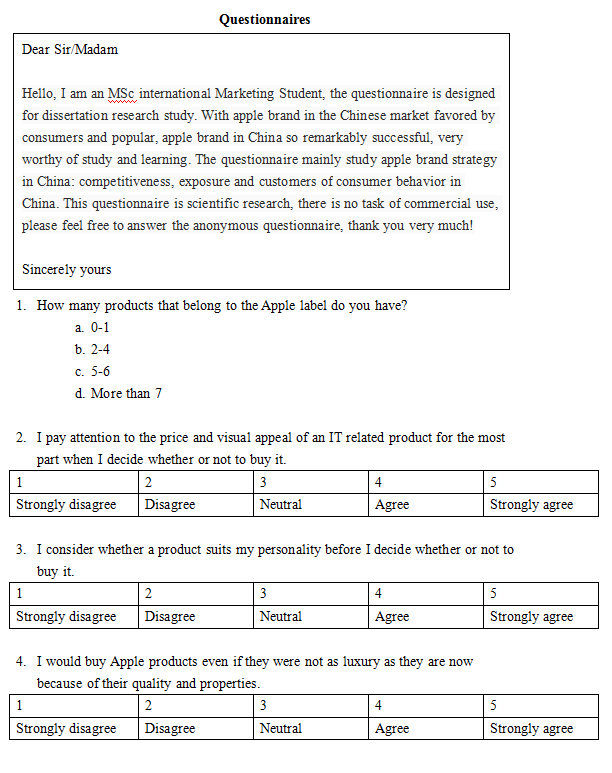
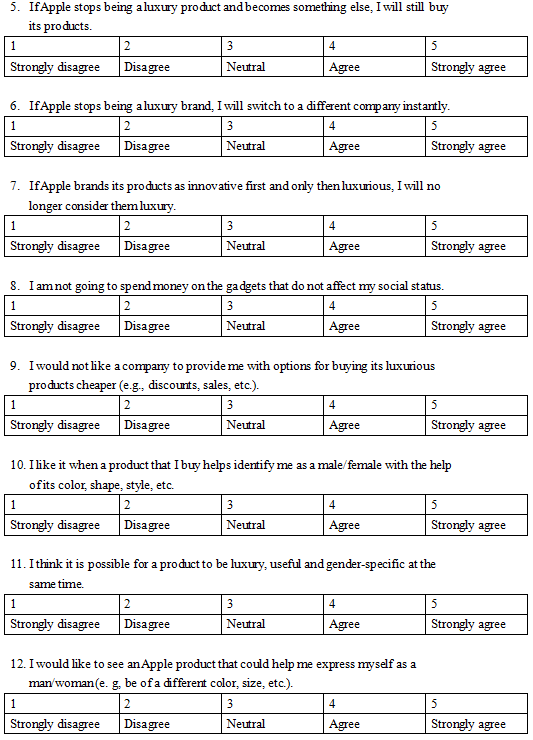

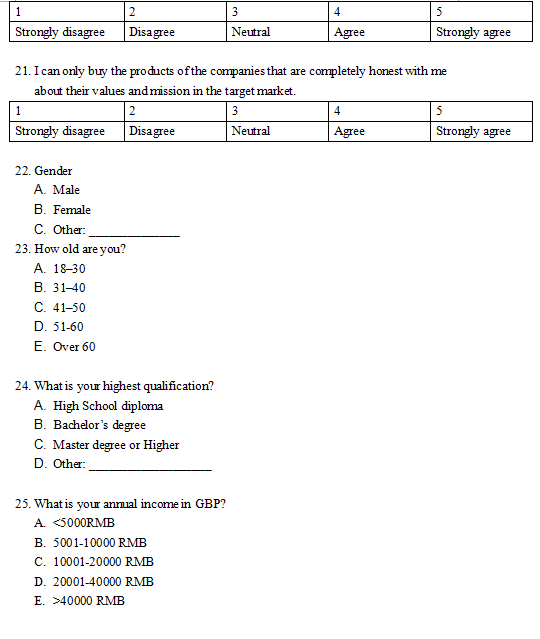
Appendix B: Chinese Version
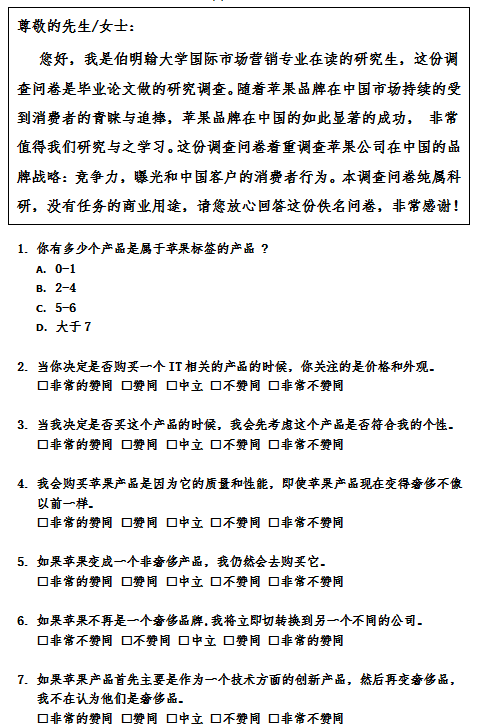
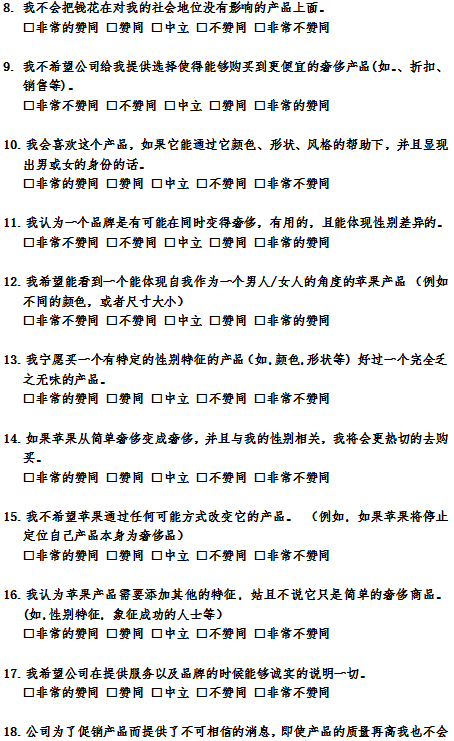
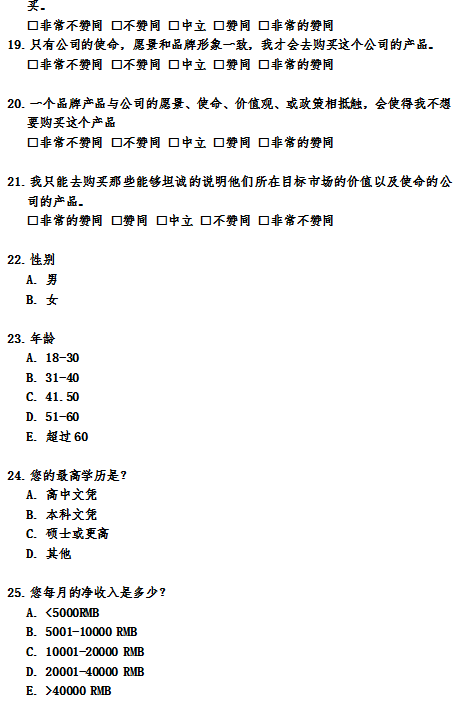
Appendix C: Participants’ Responses

